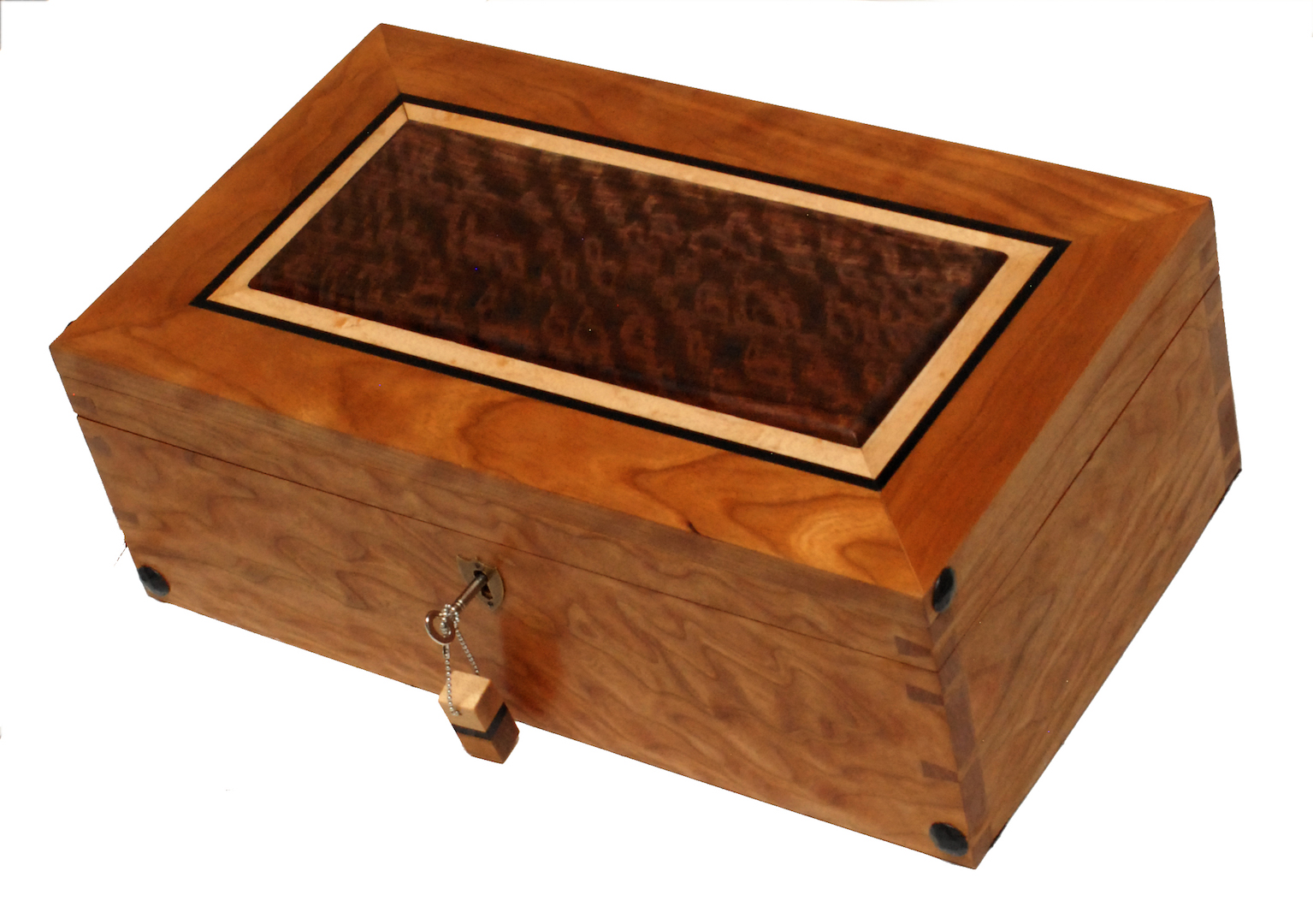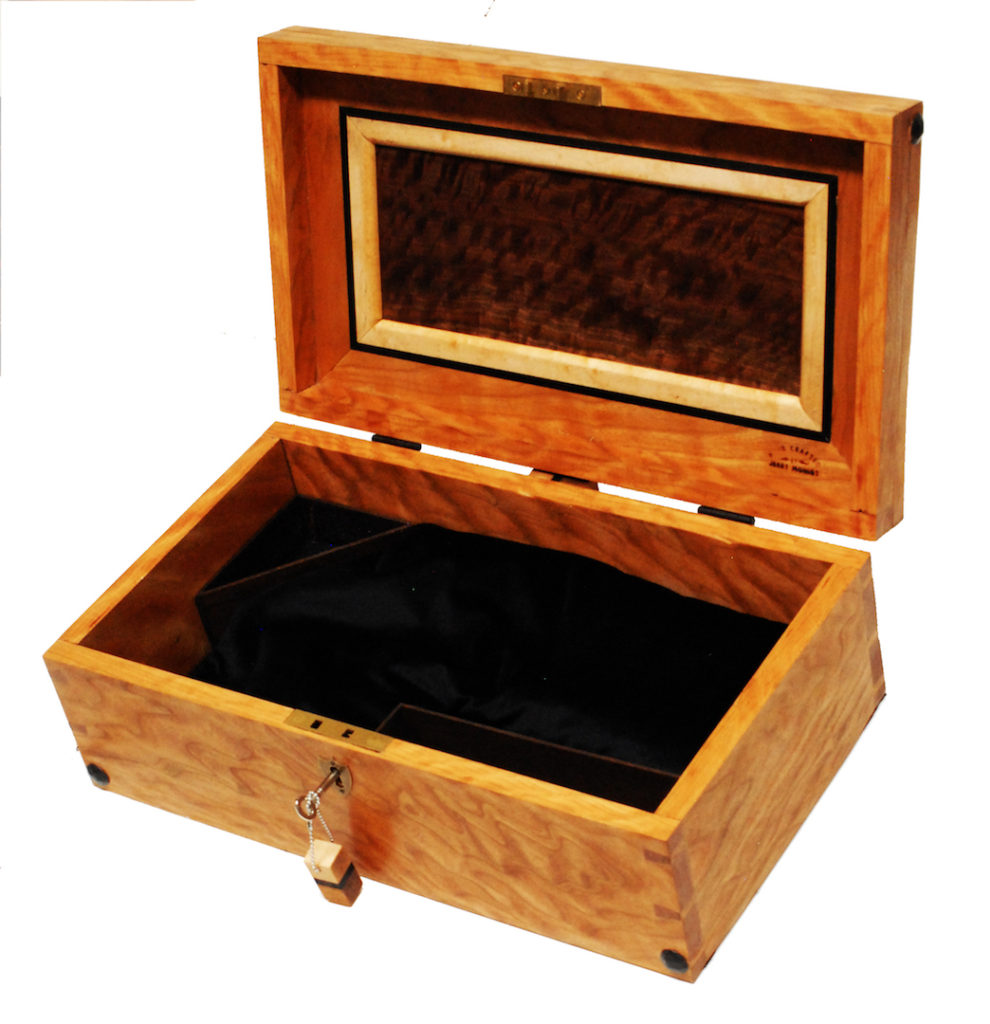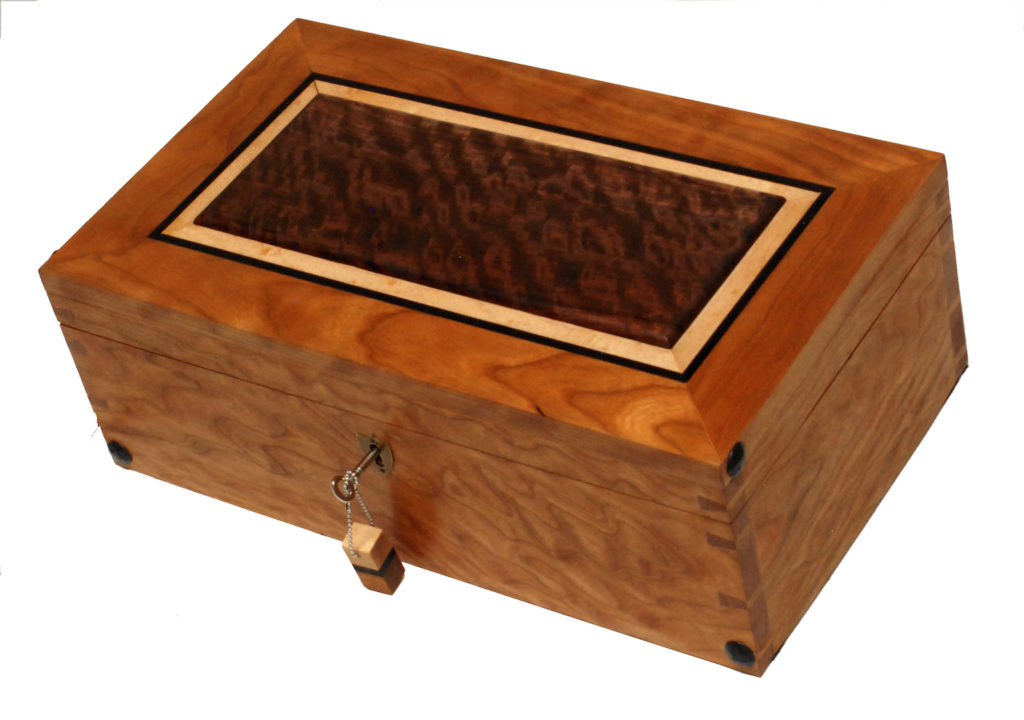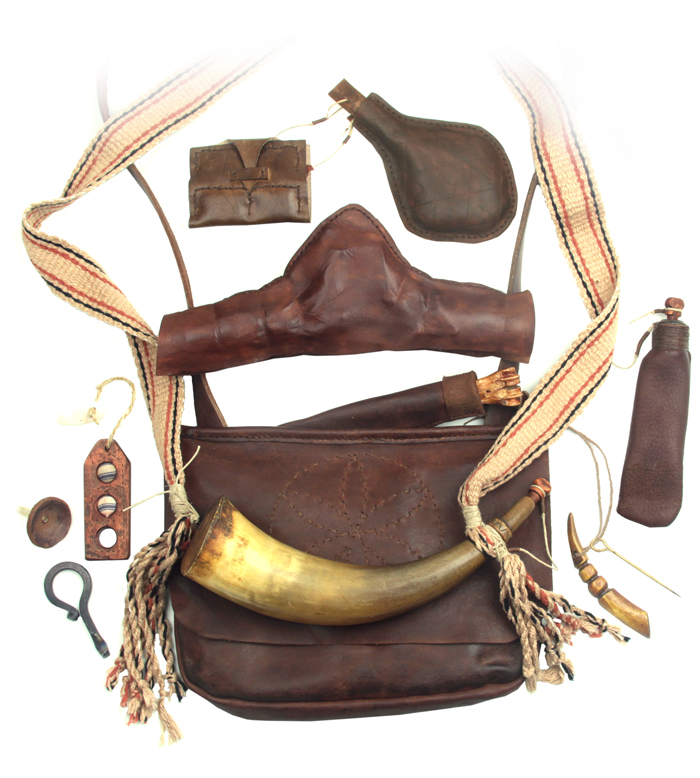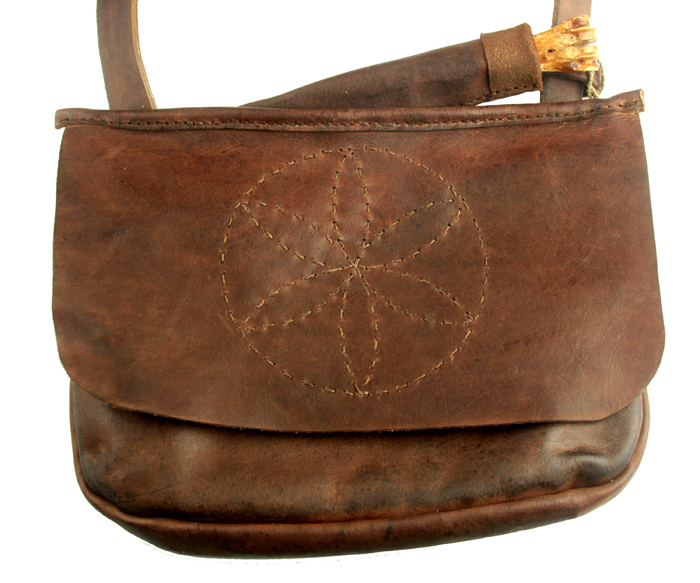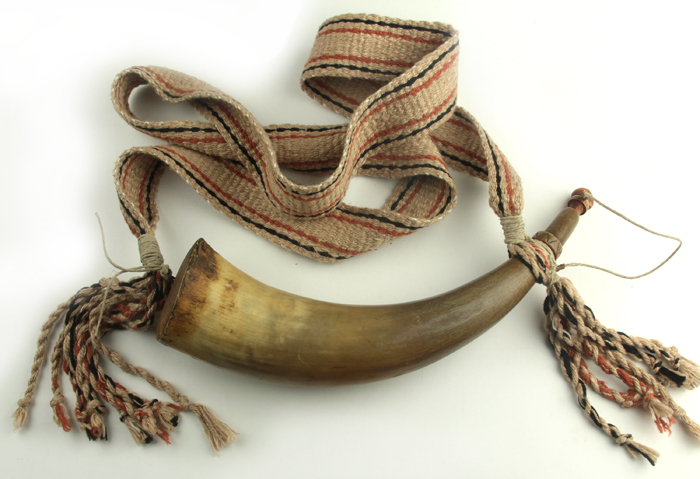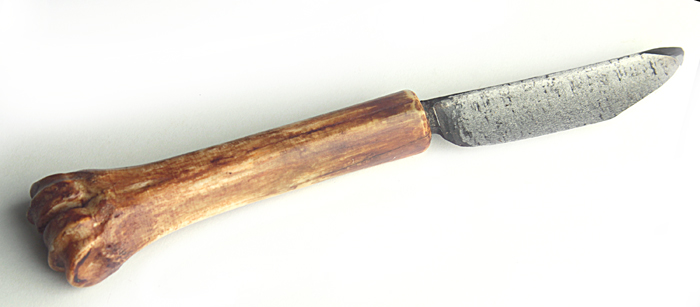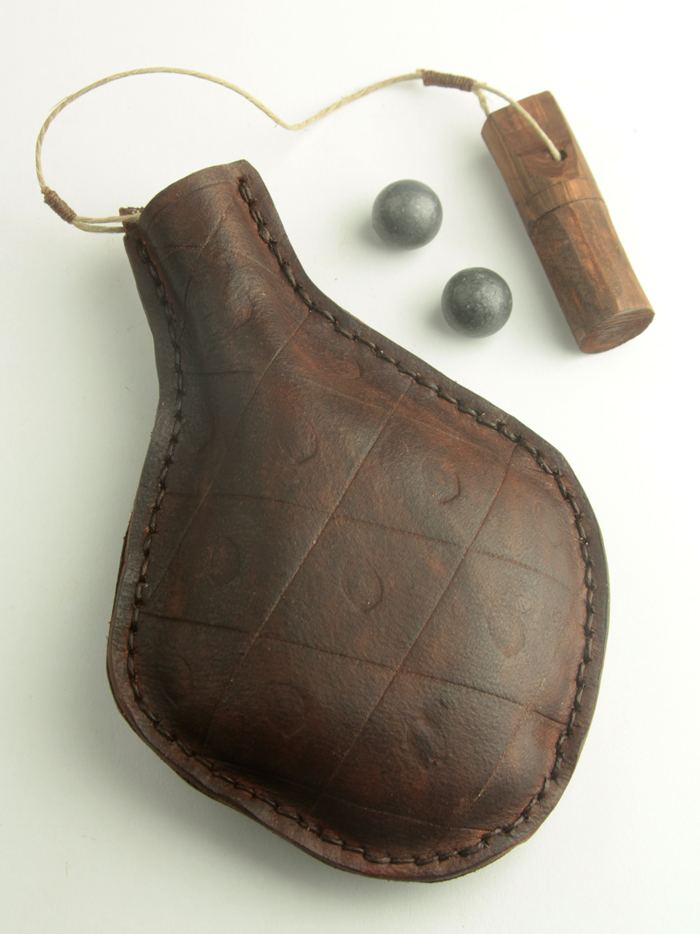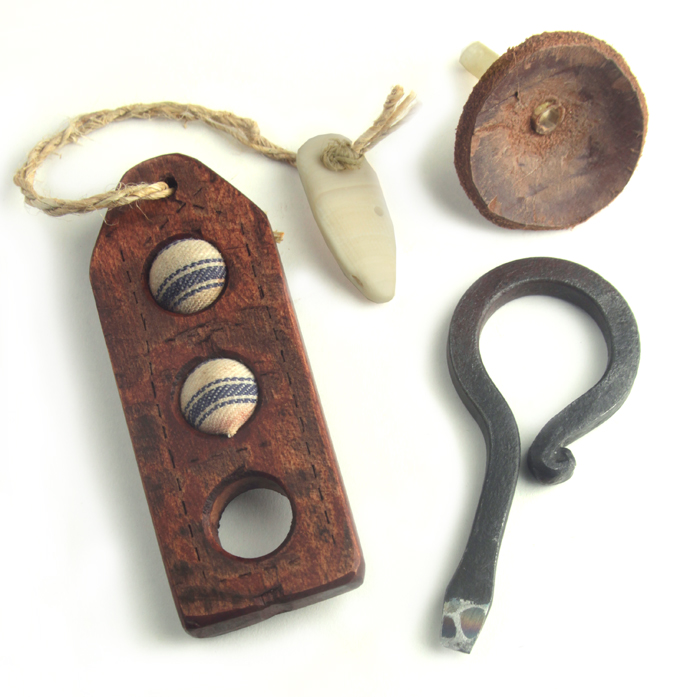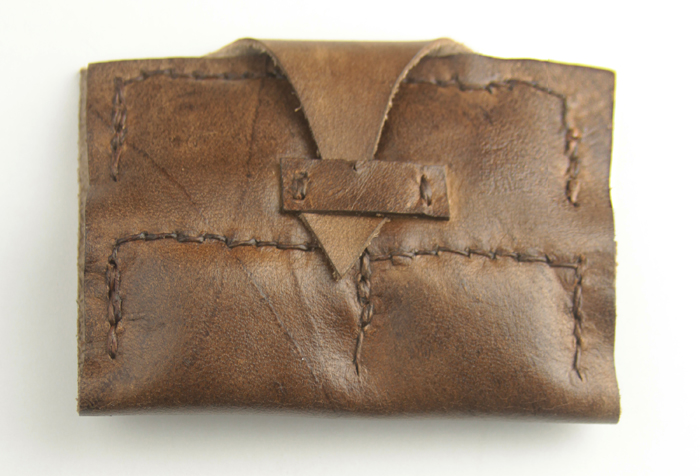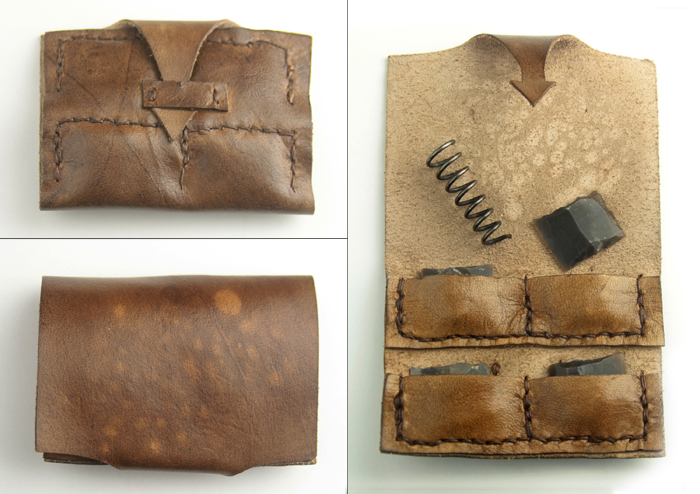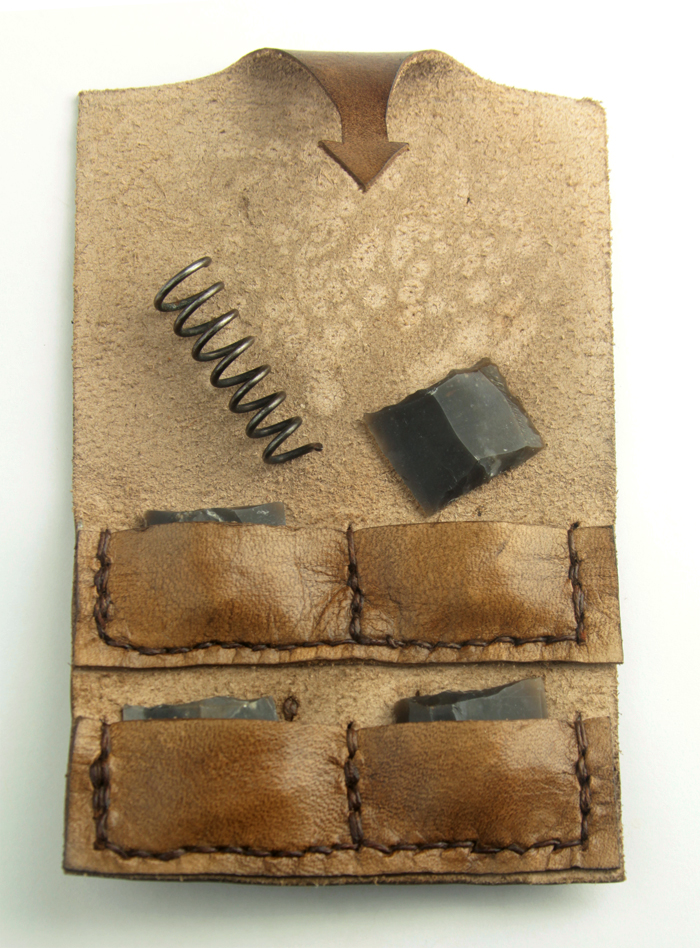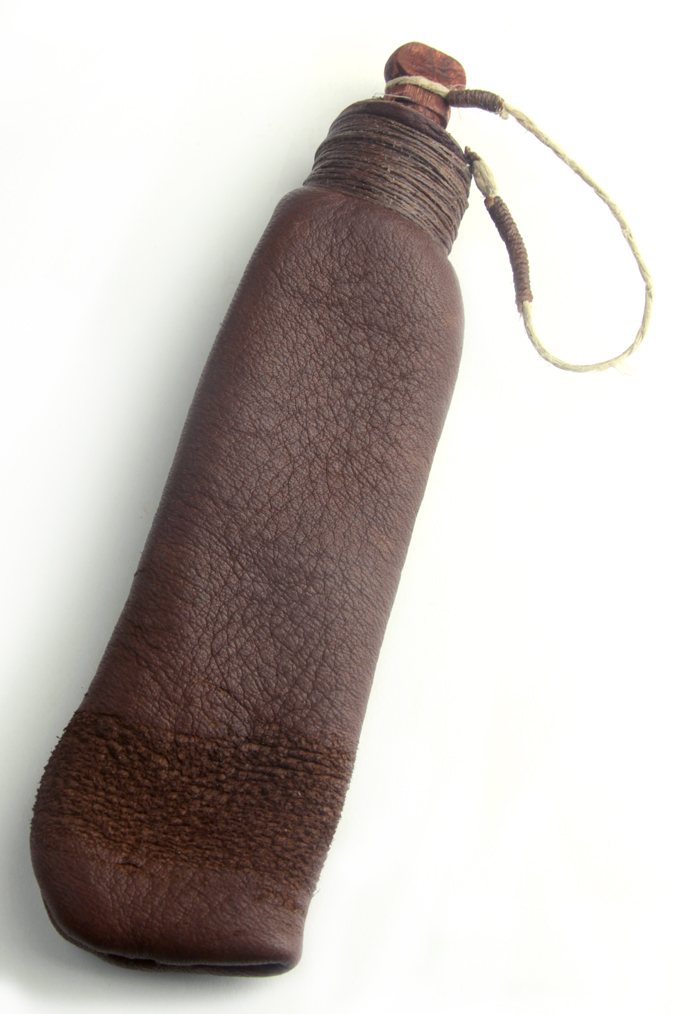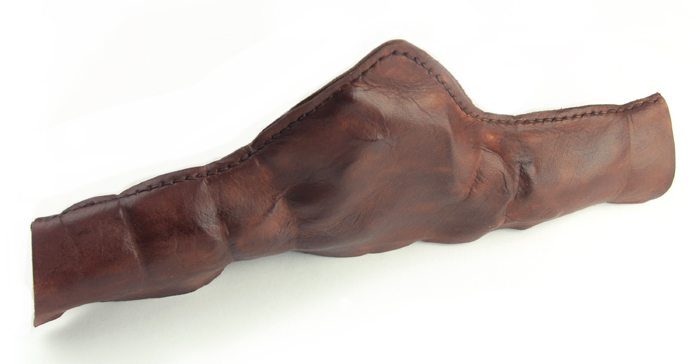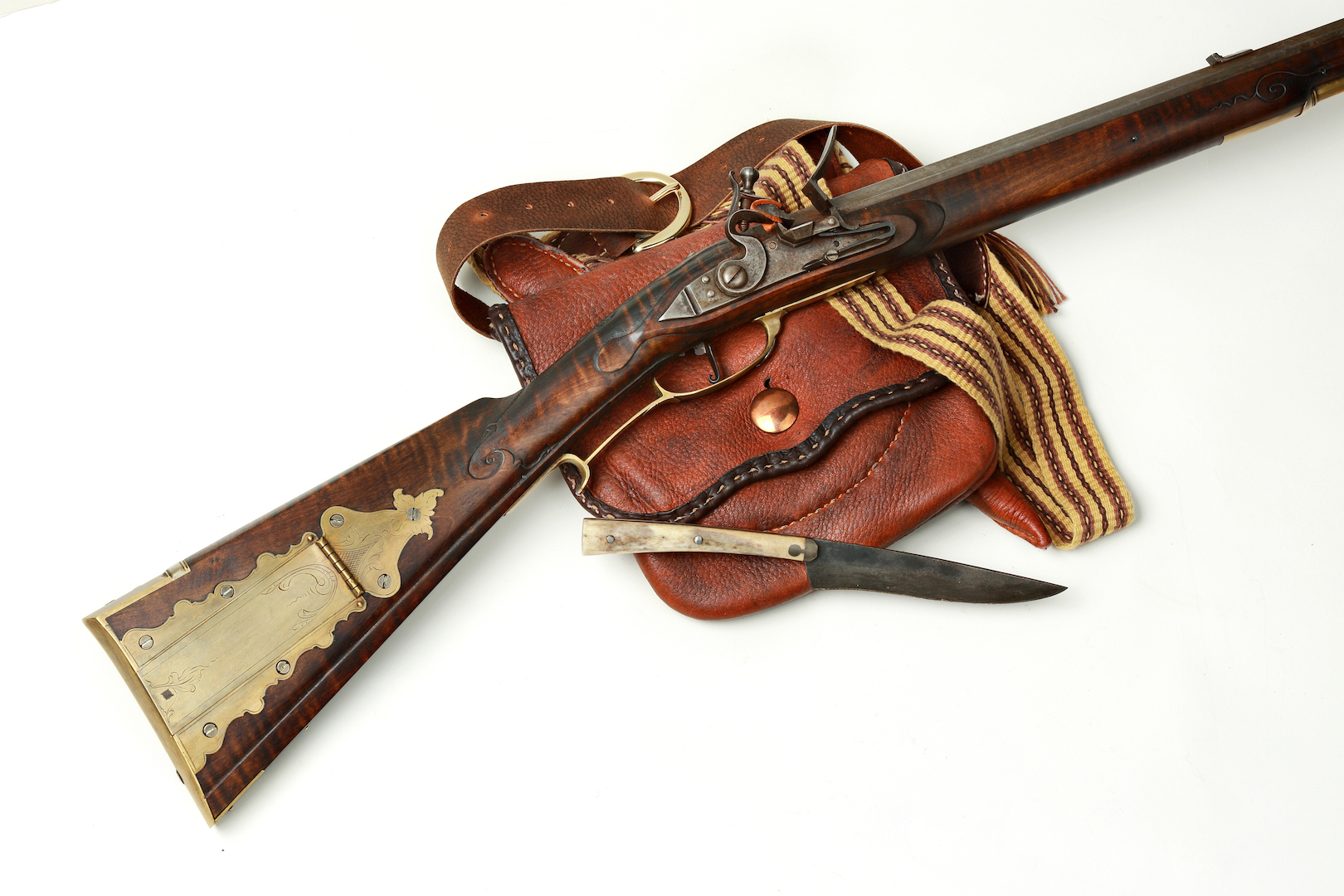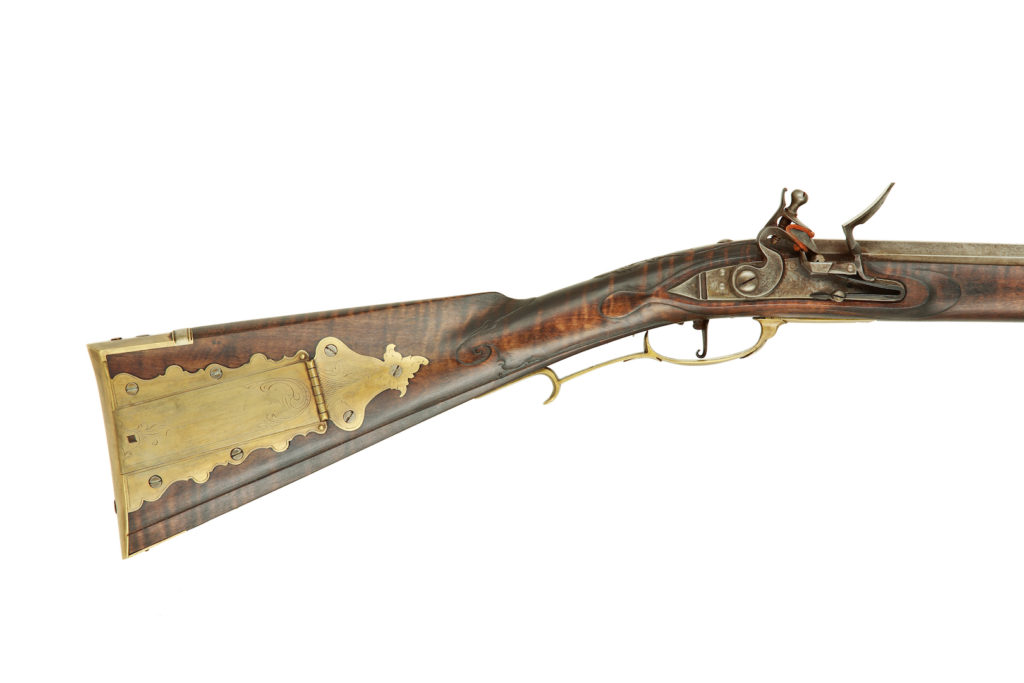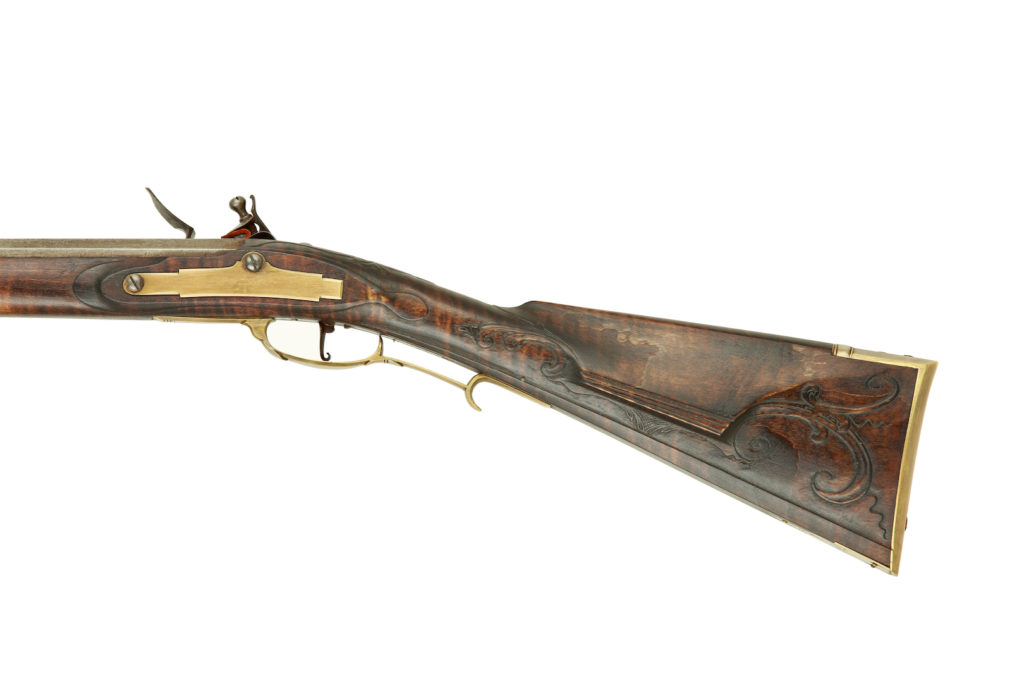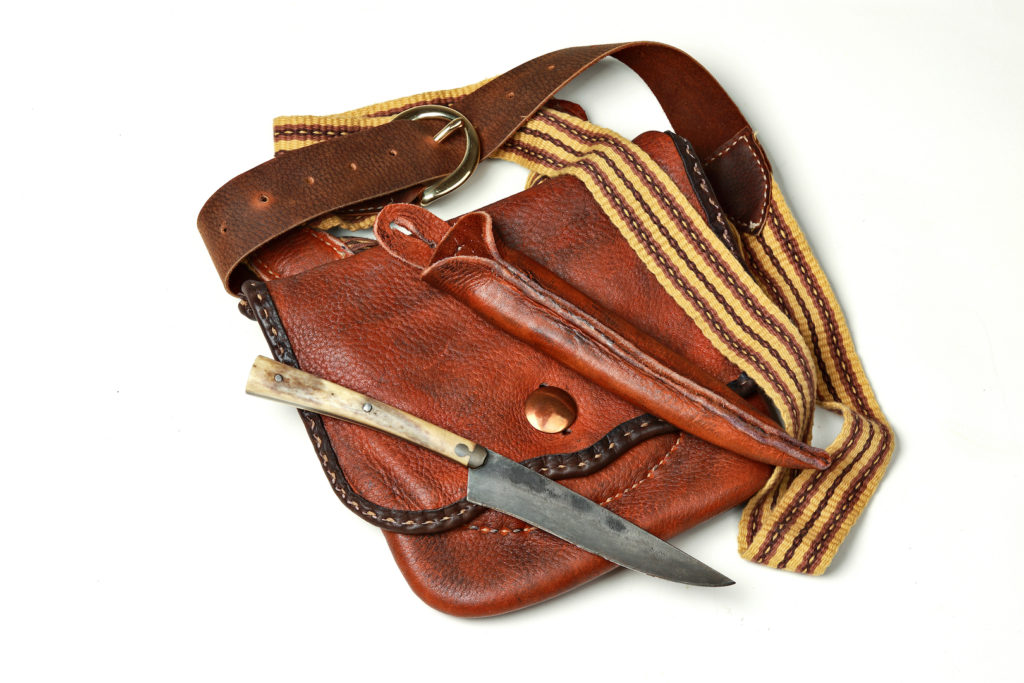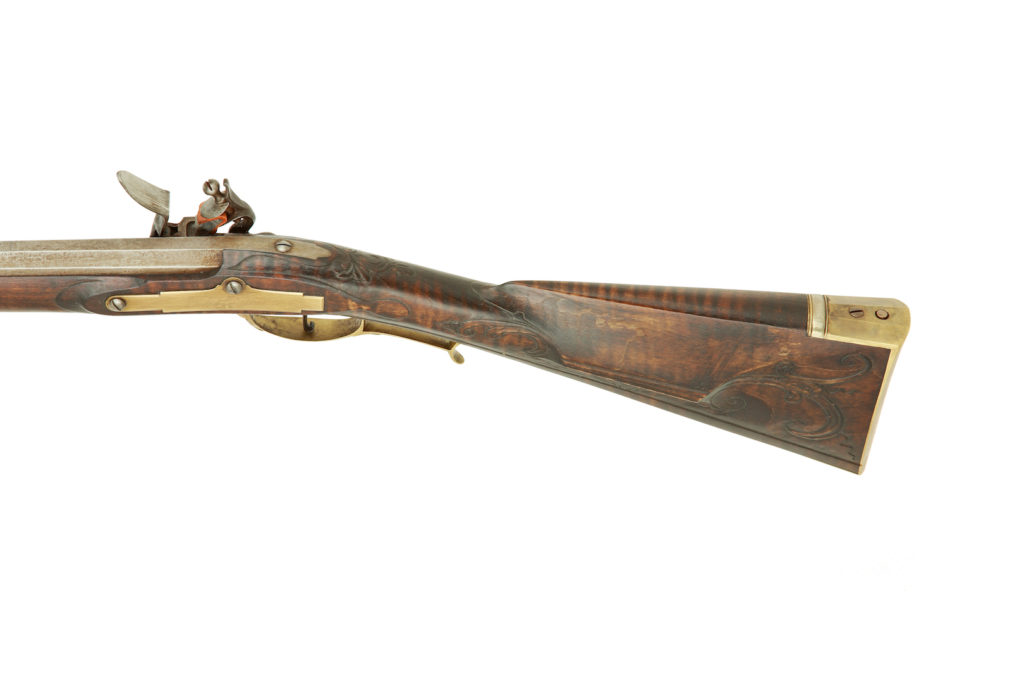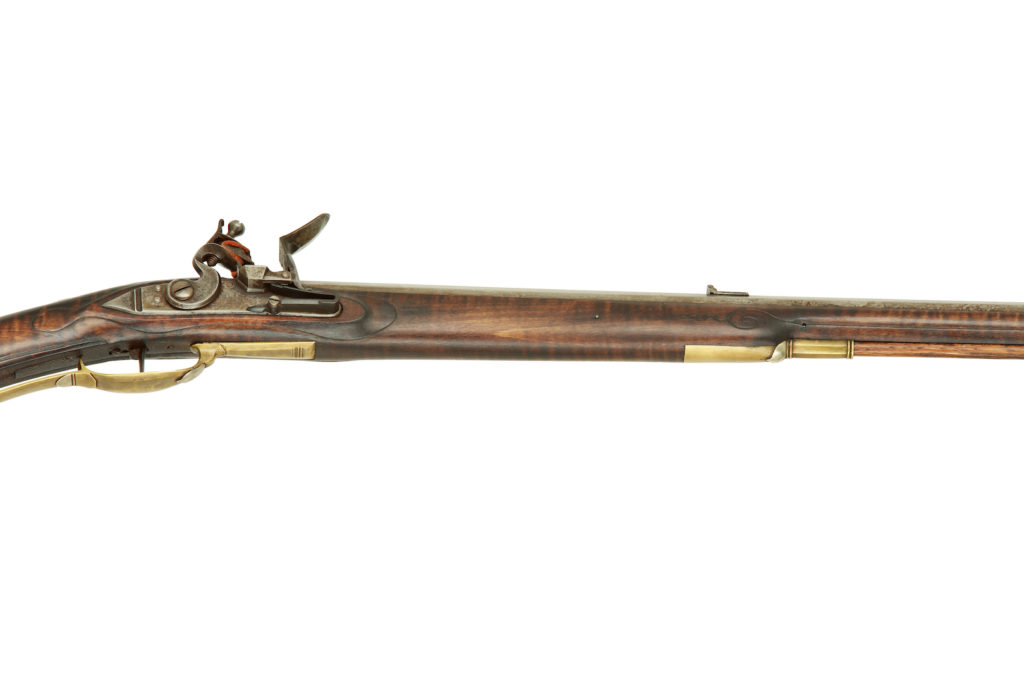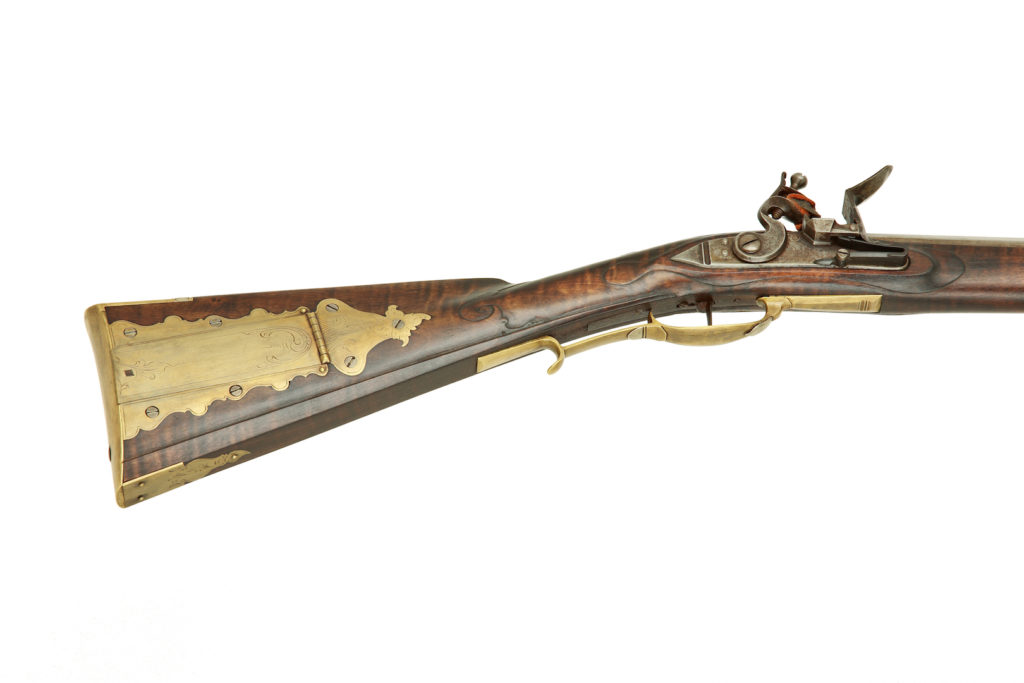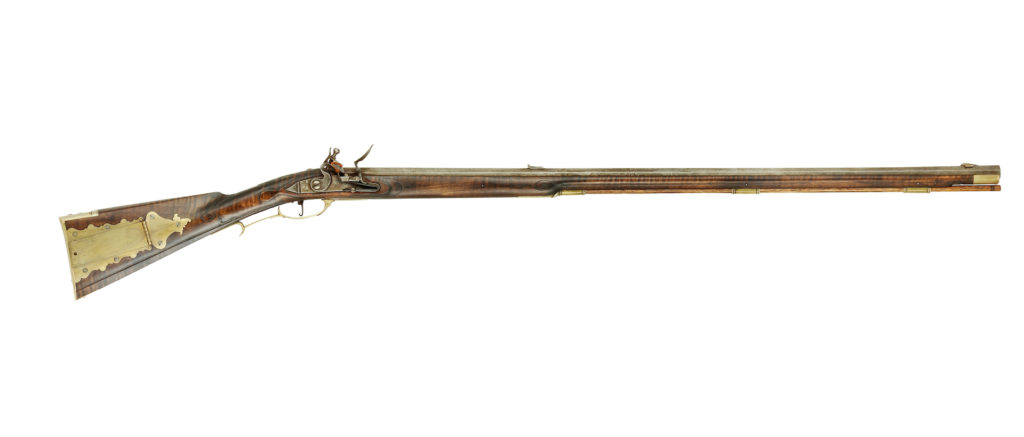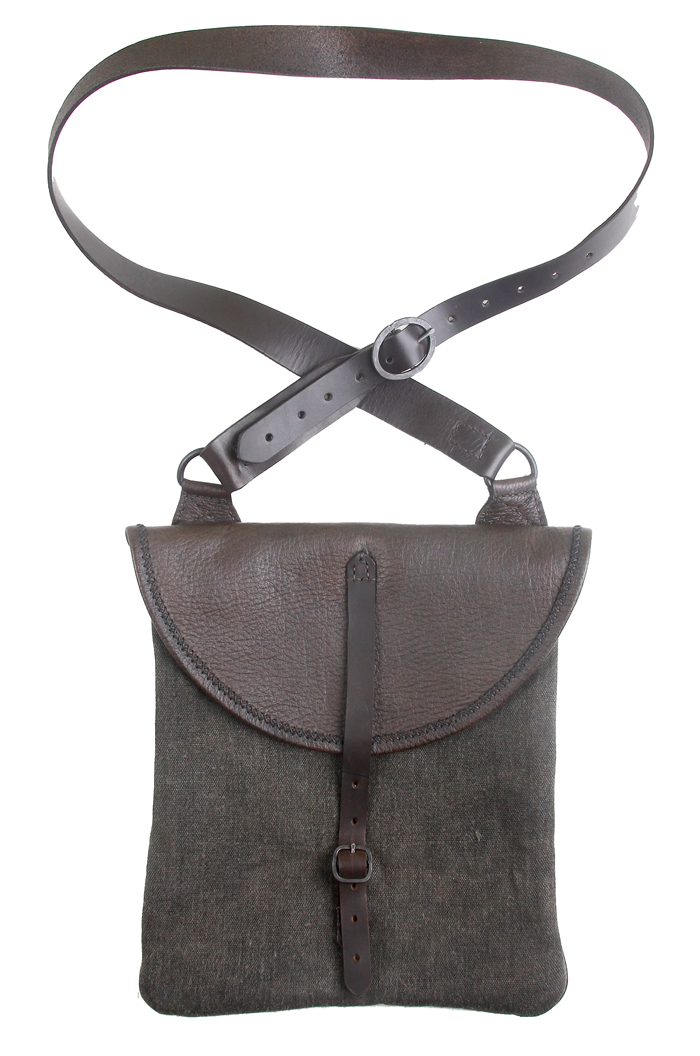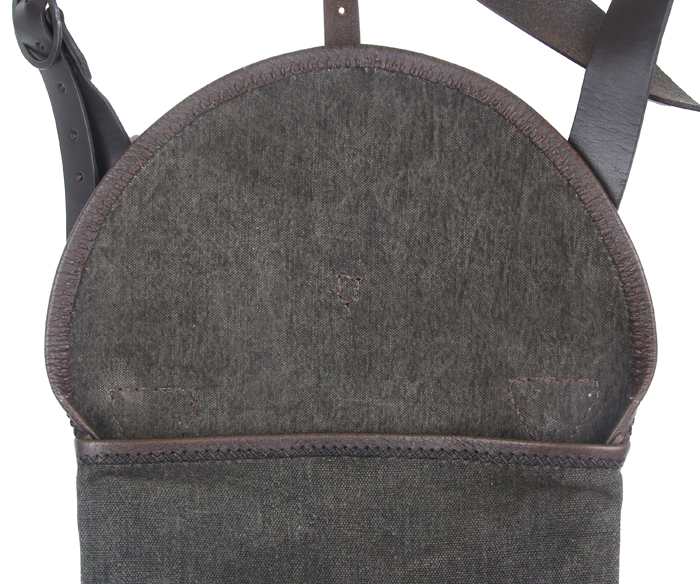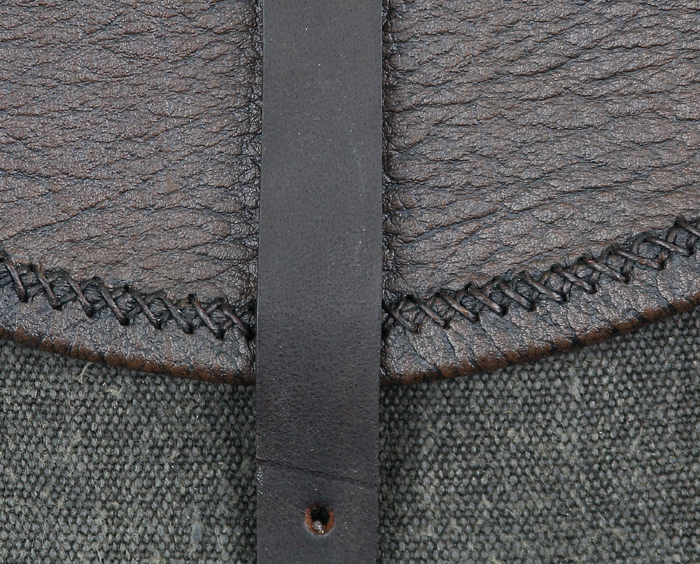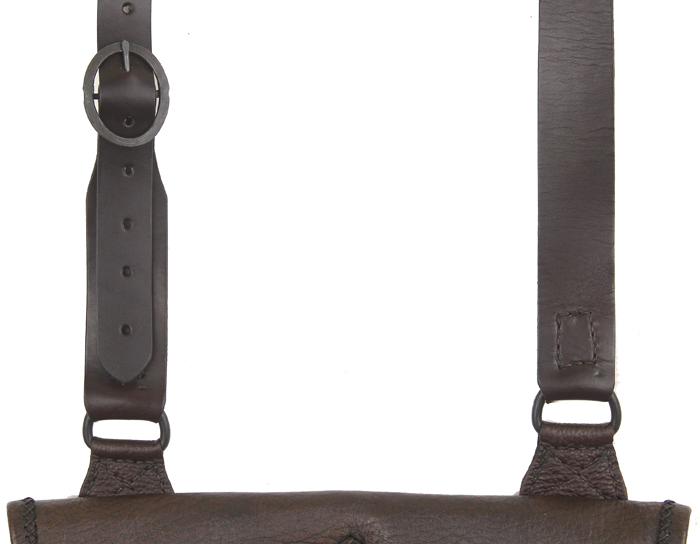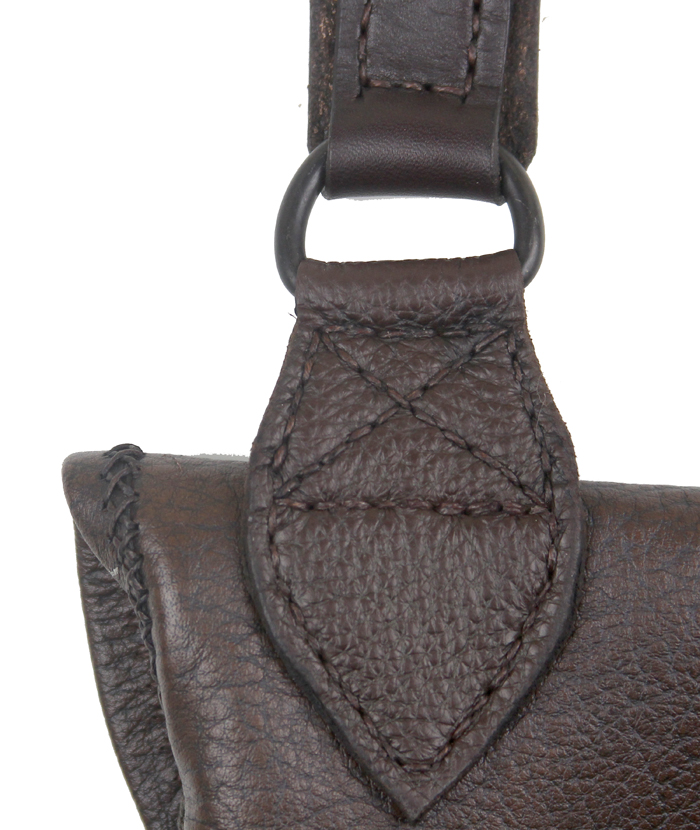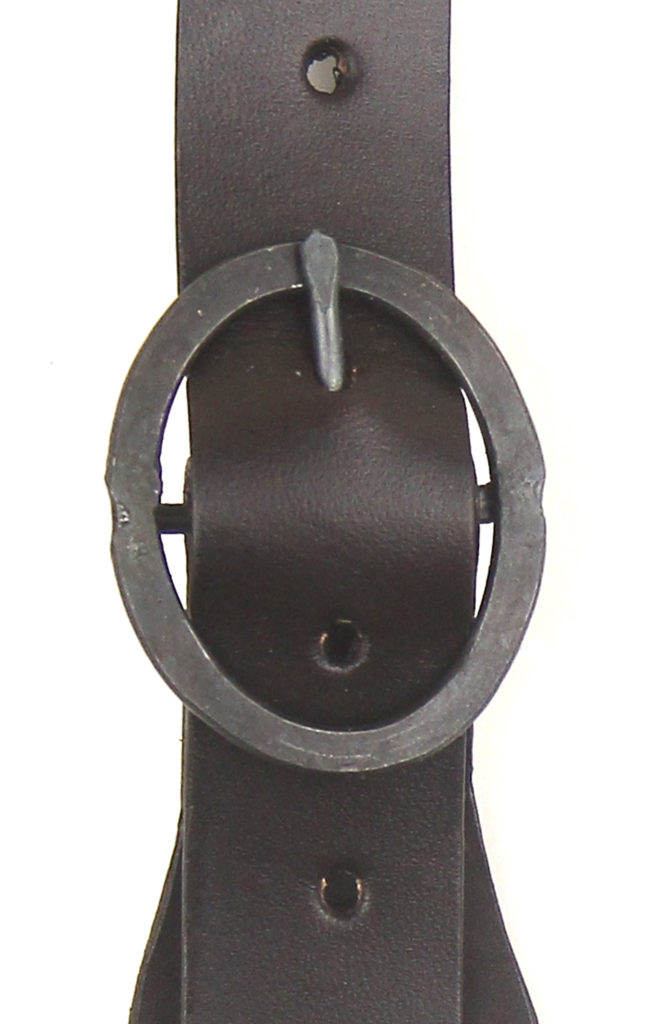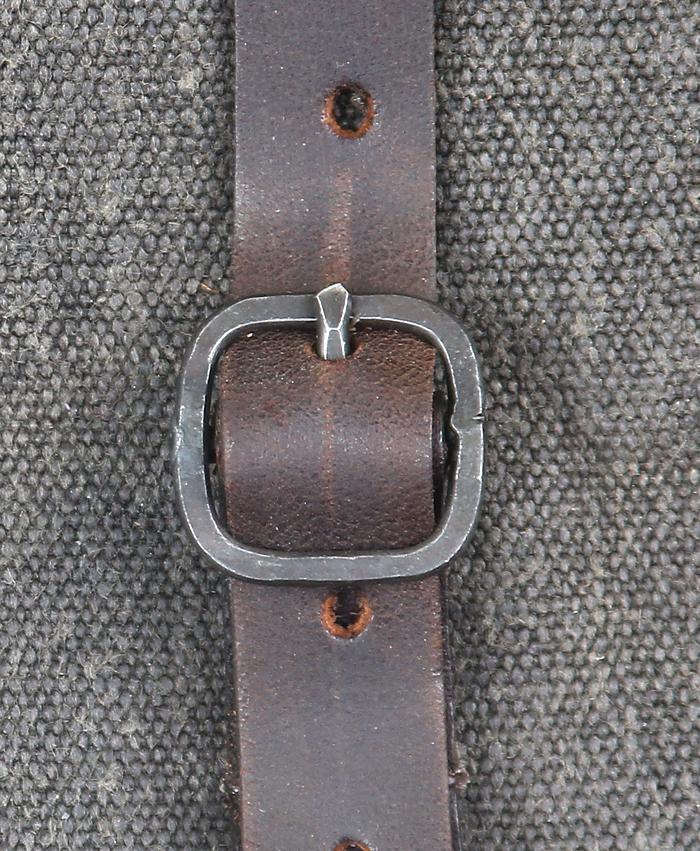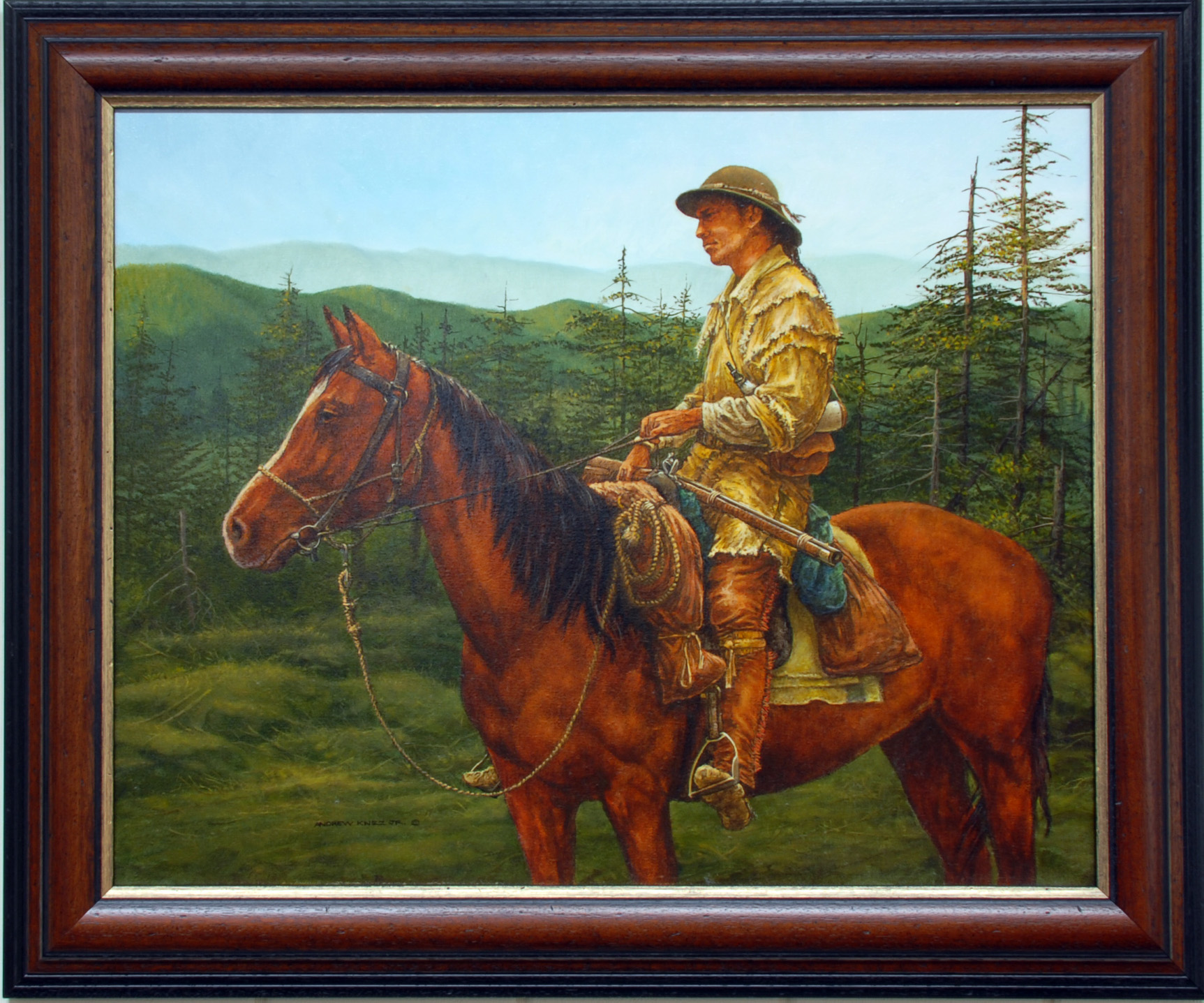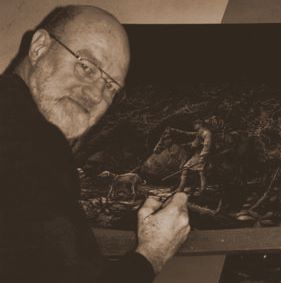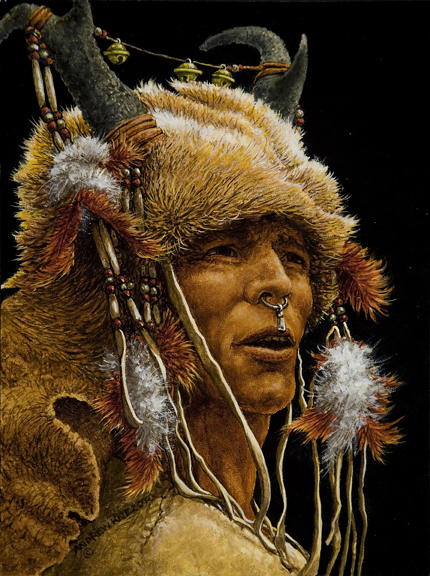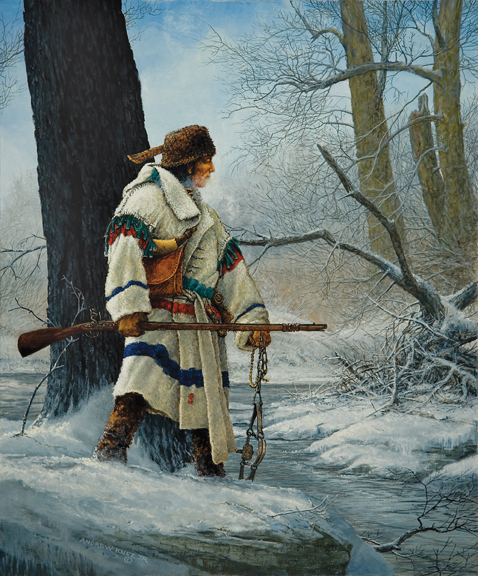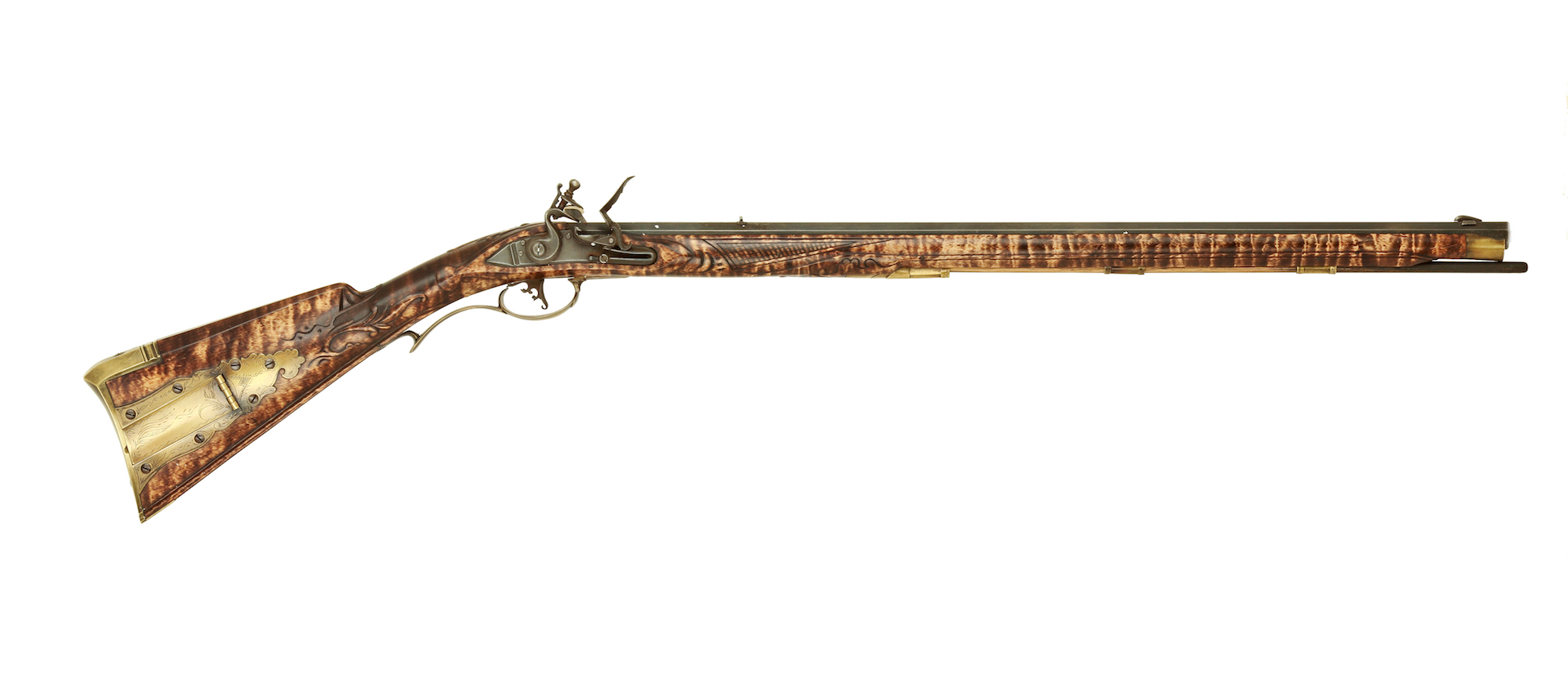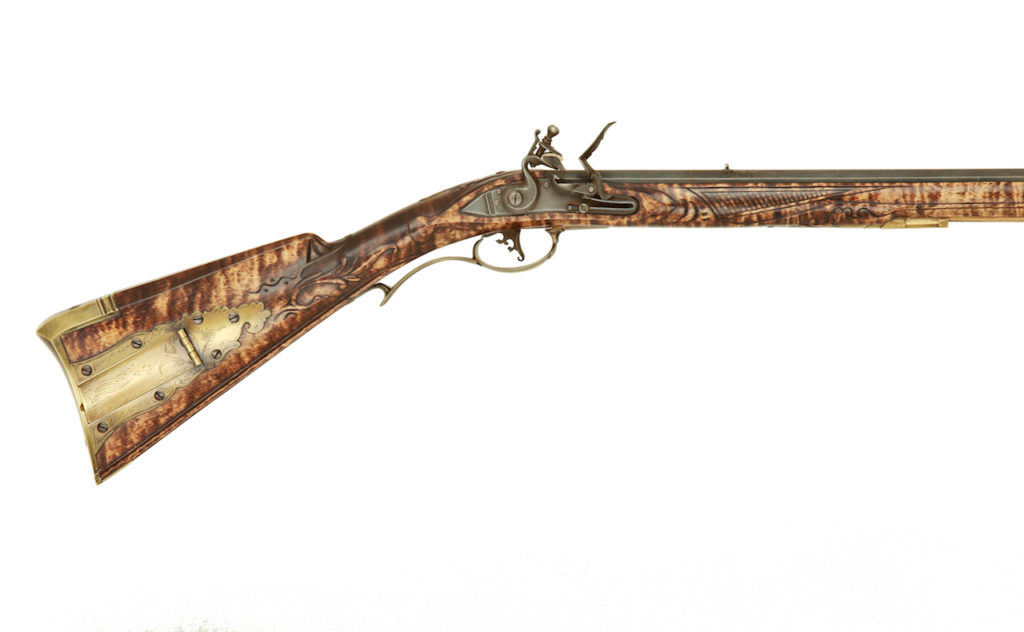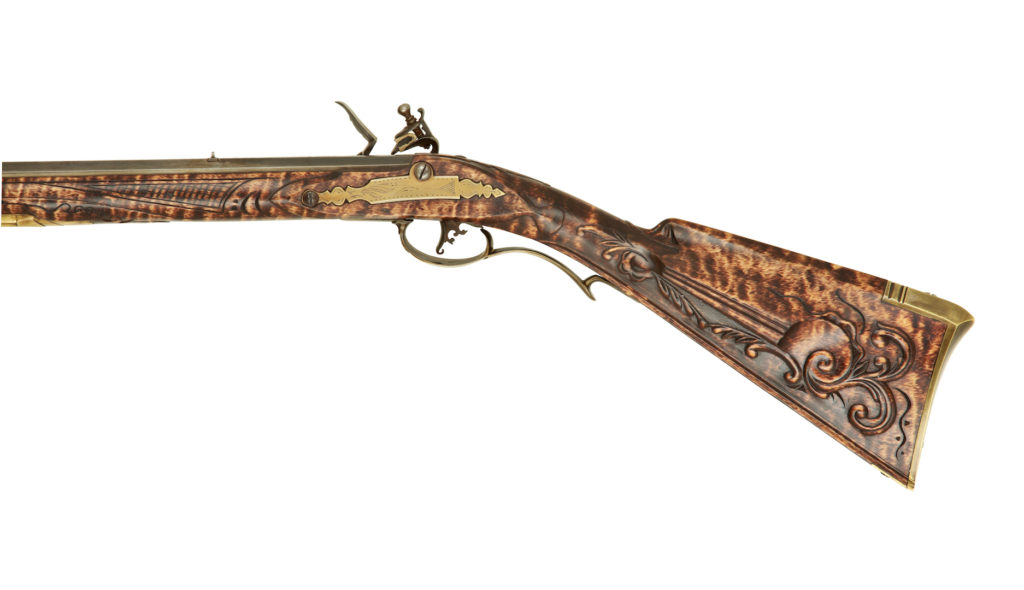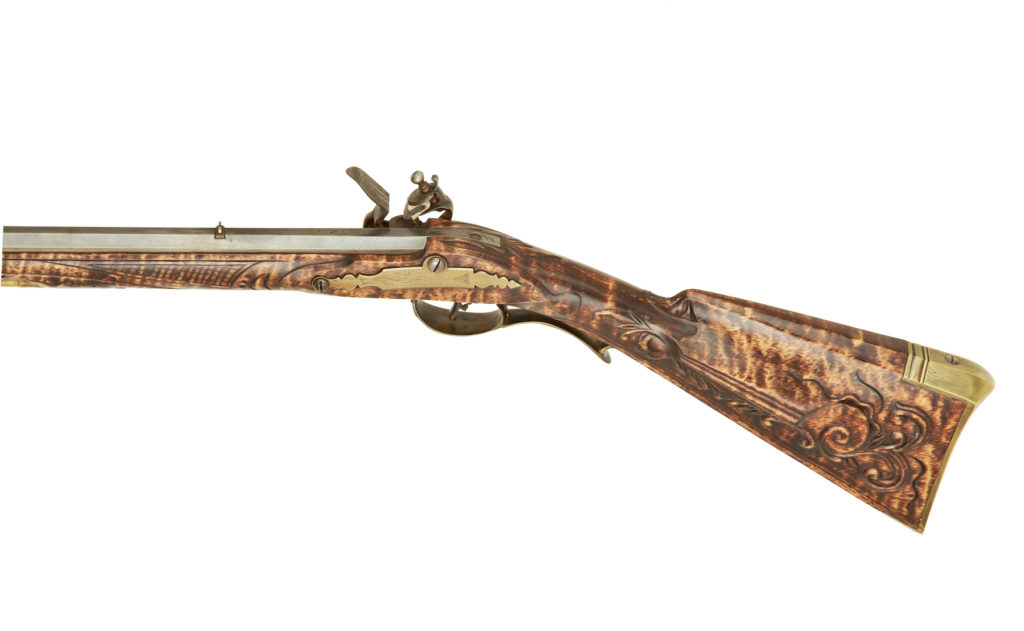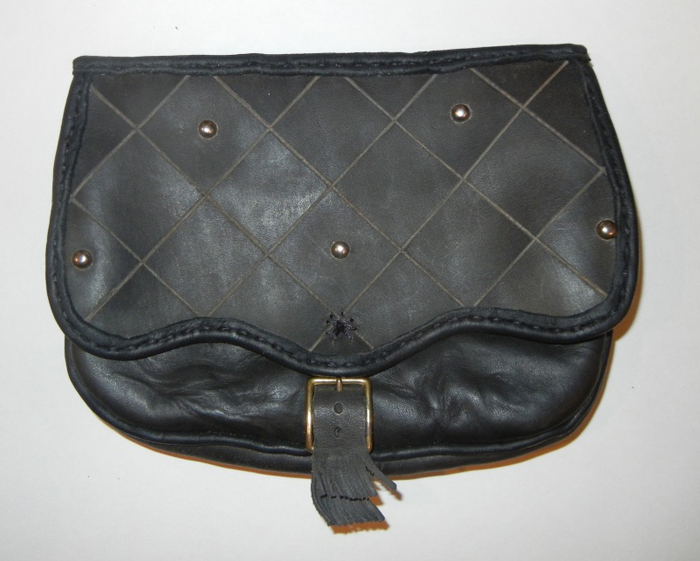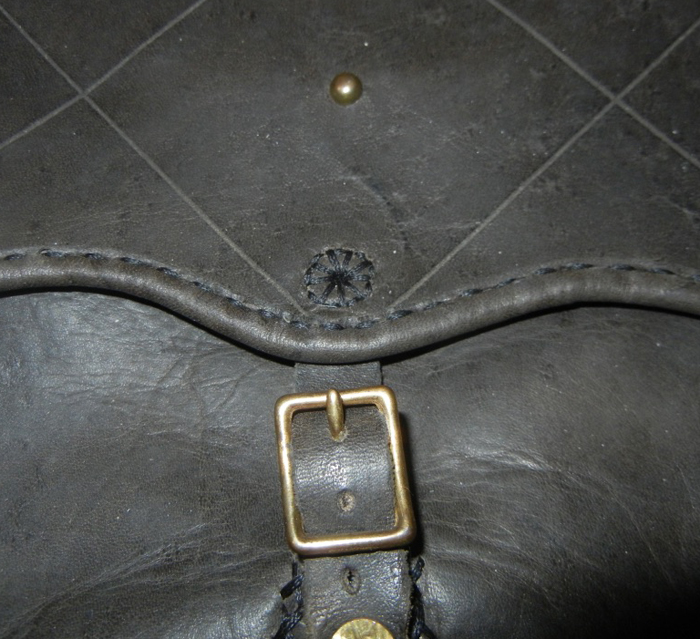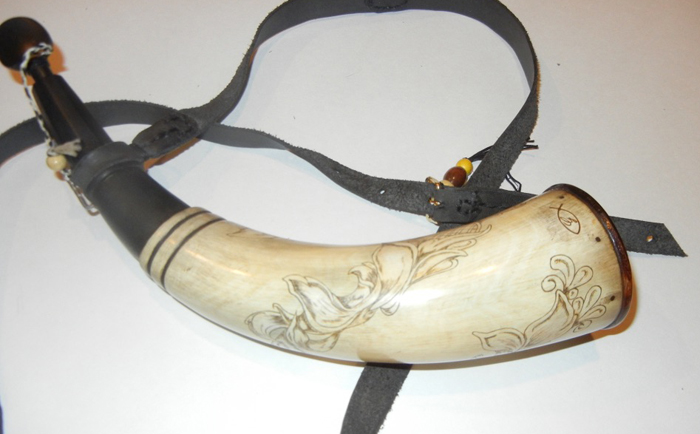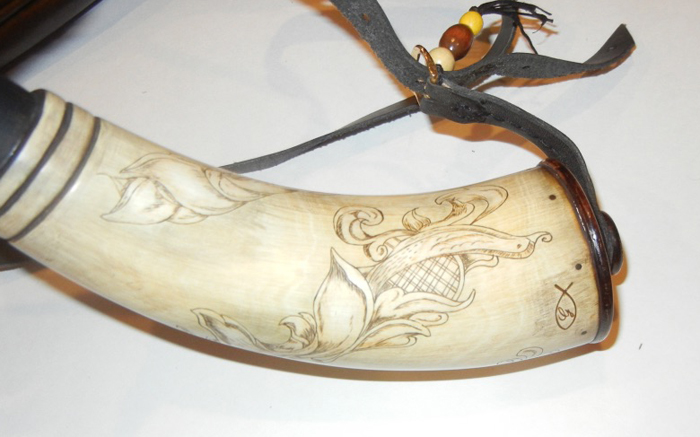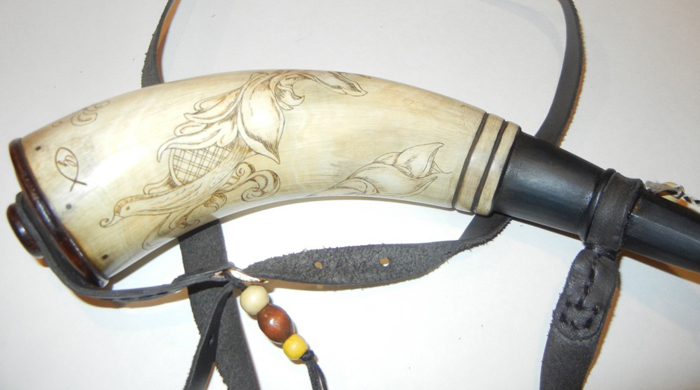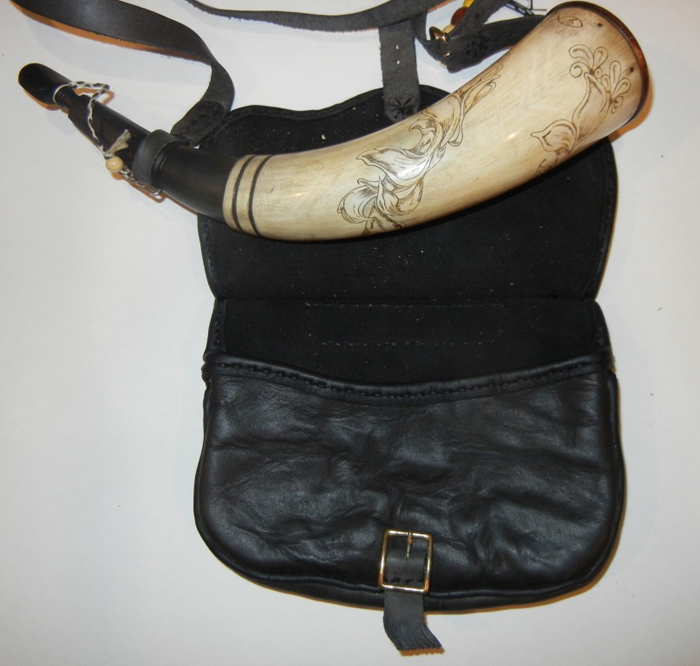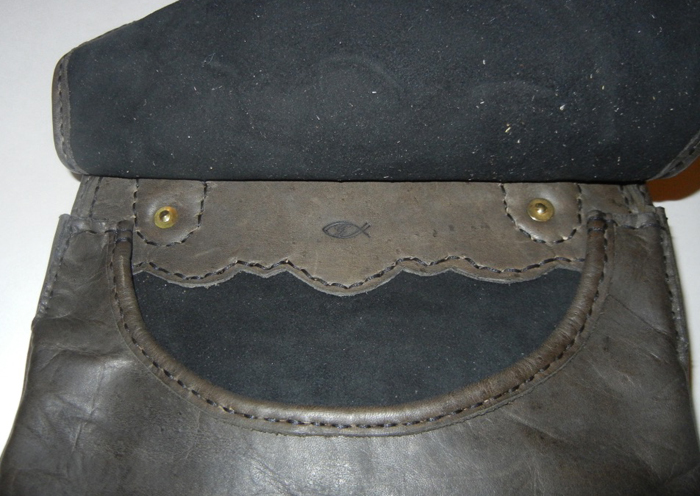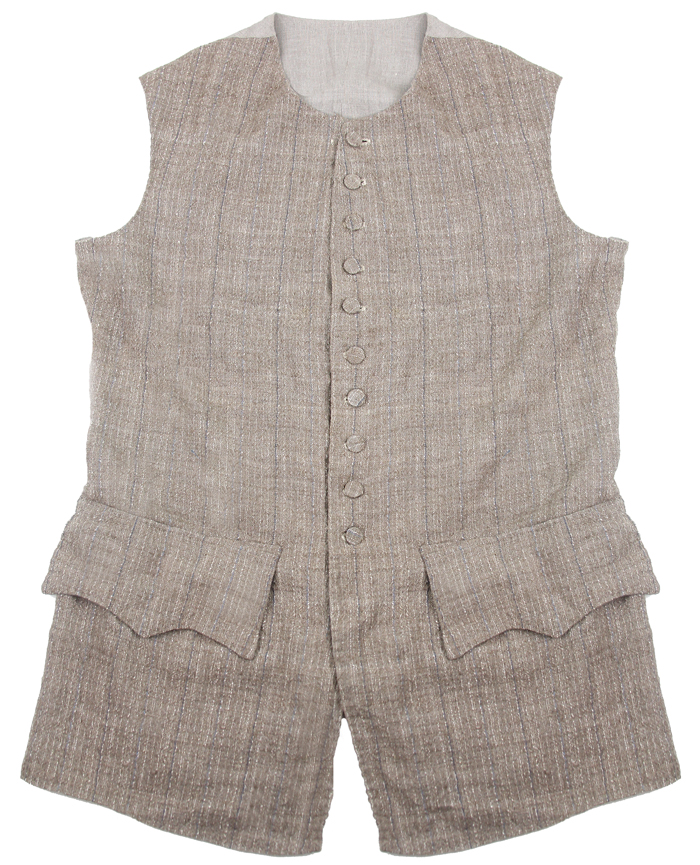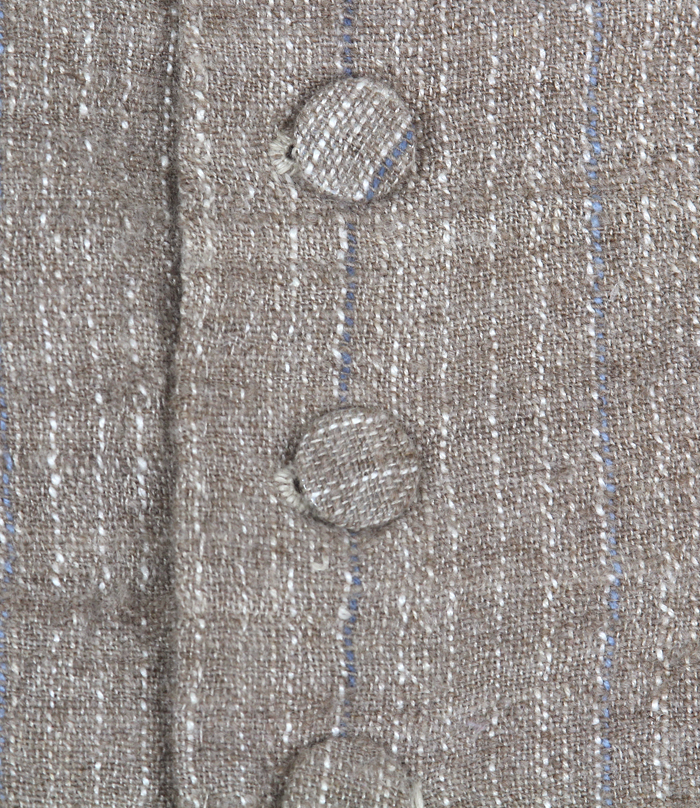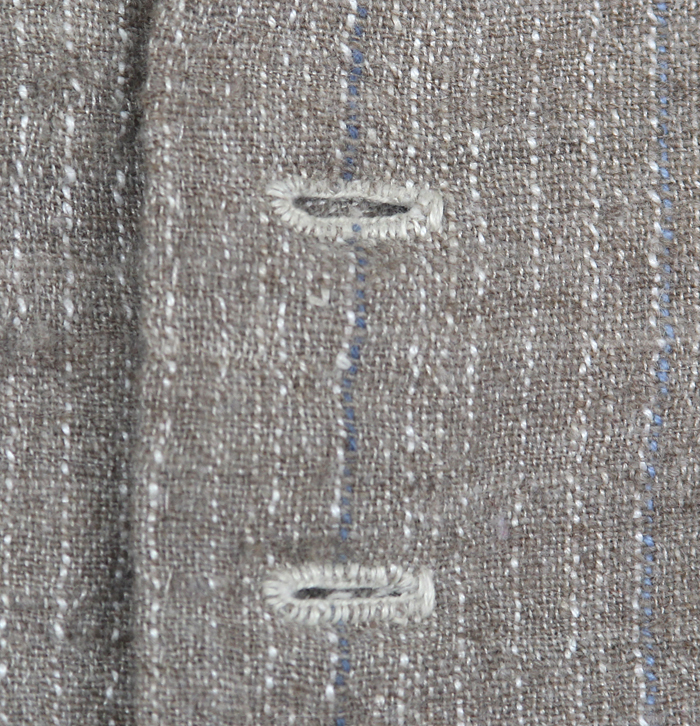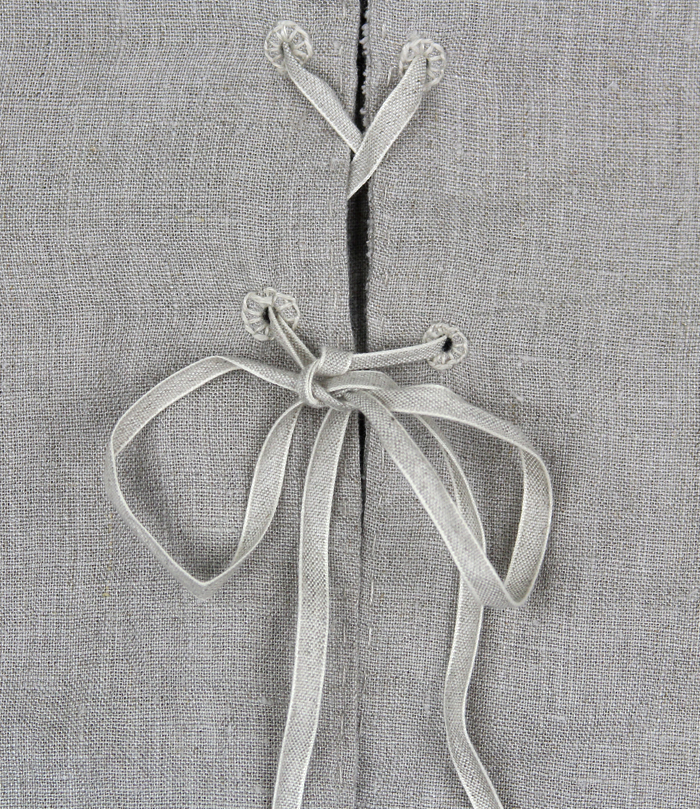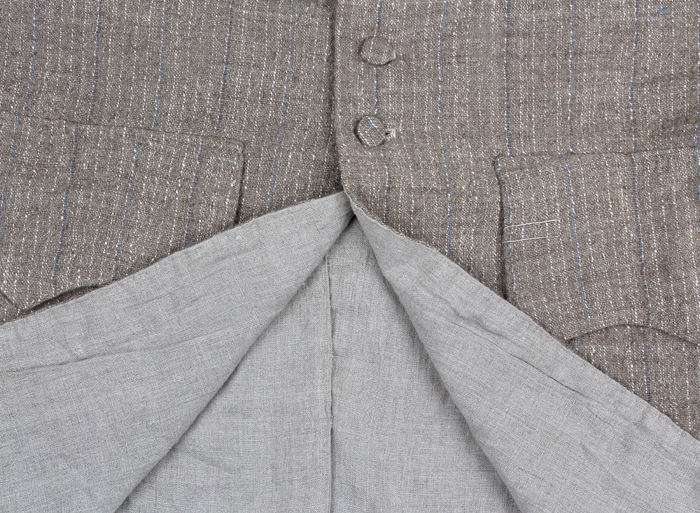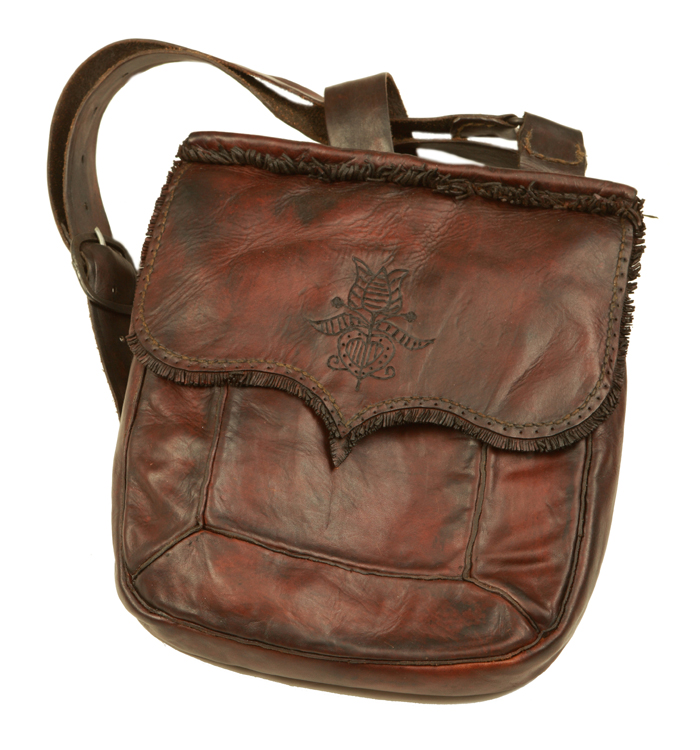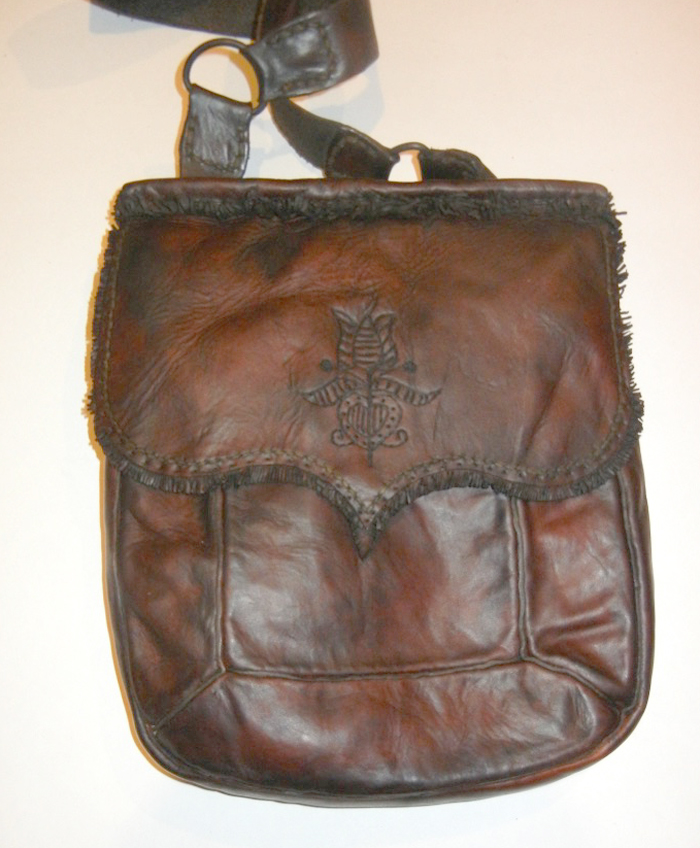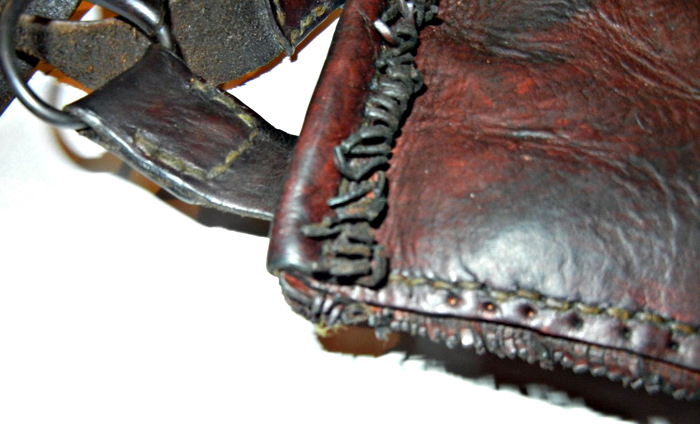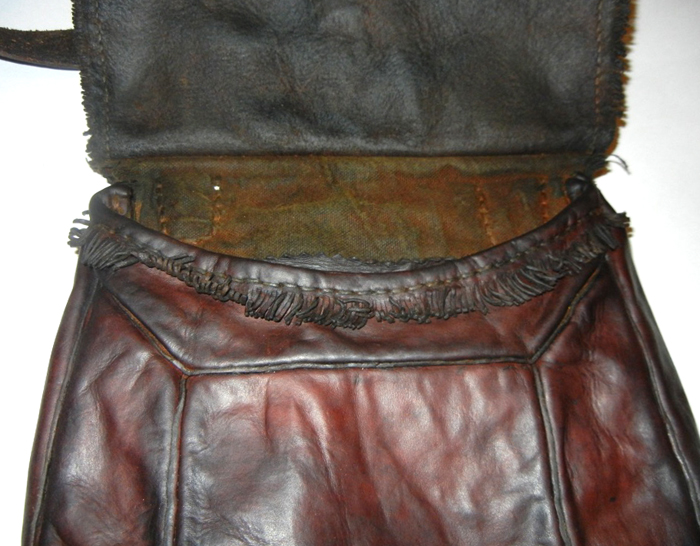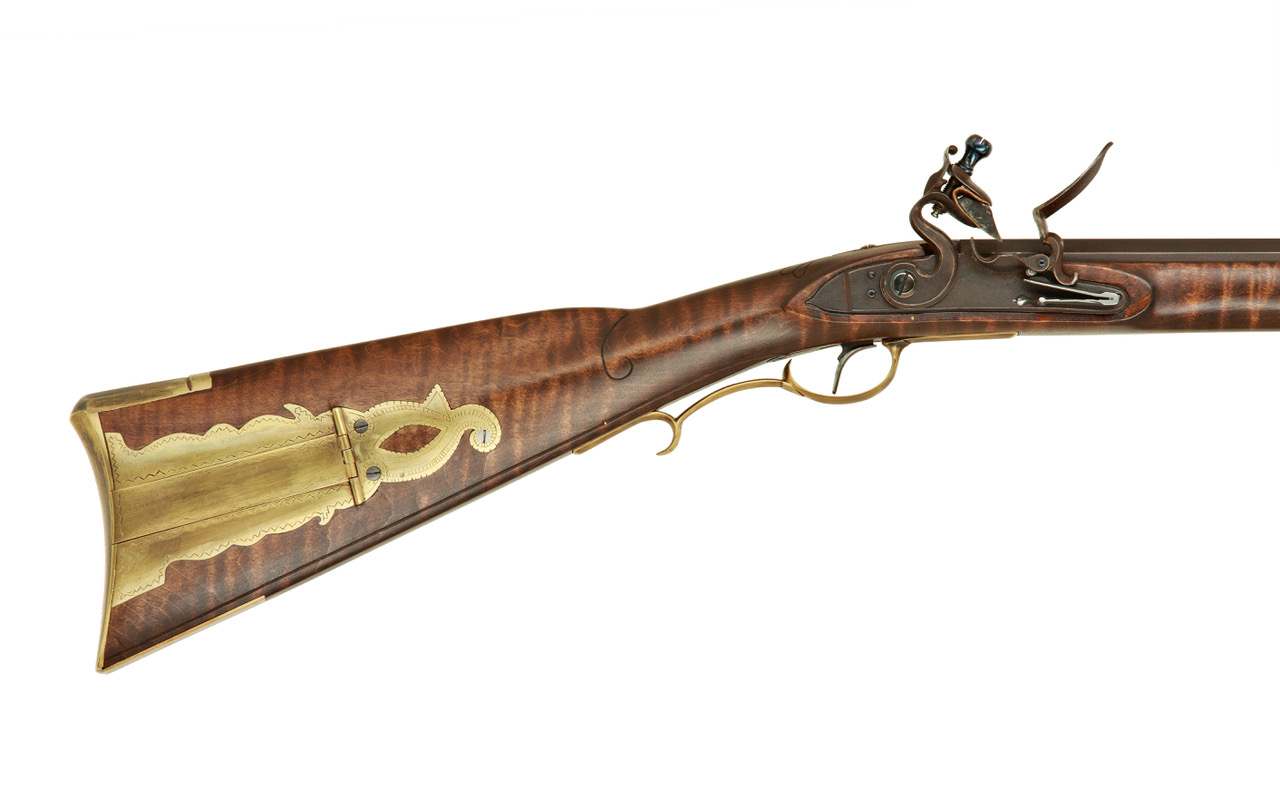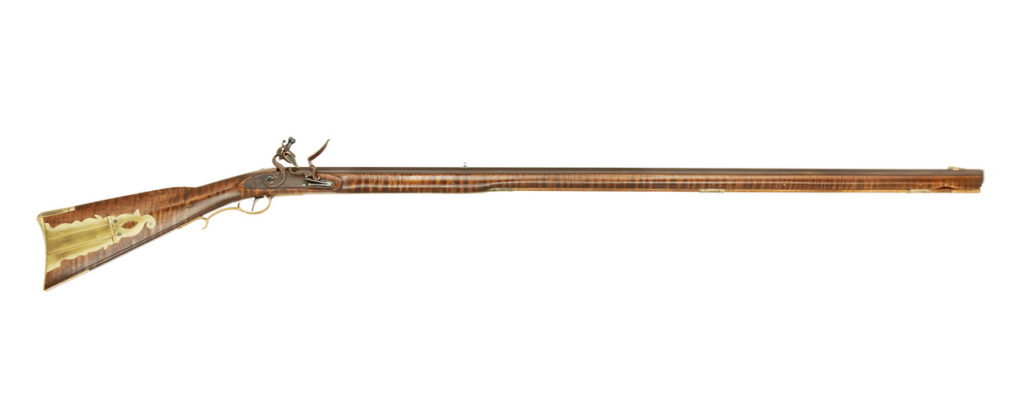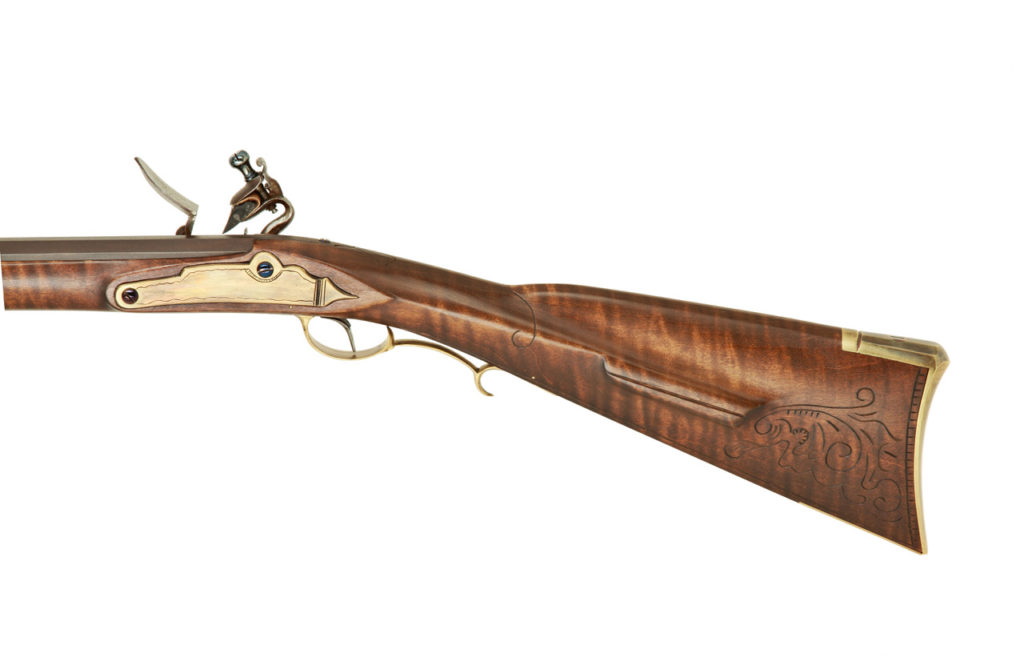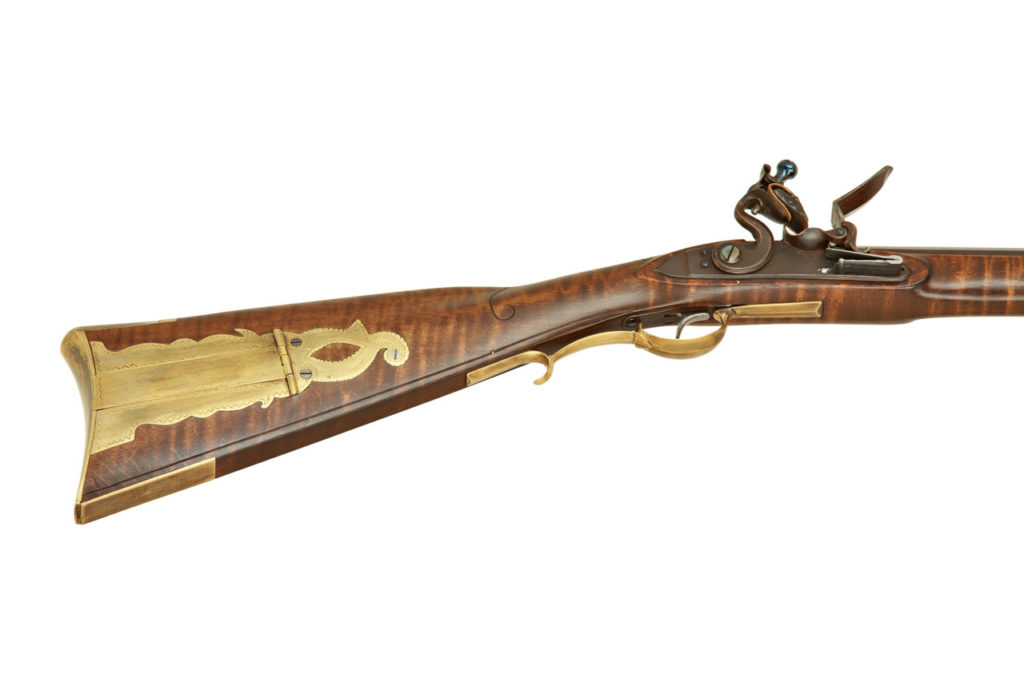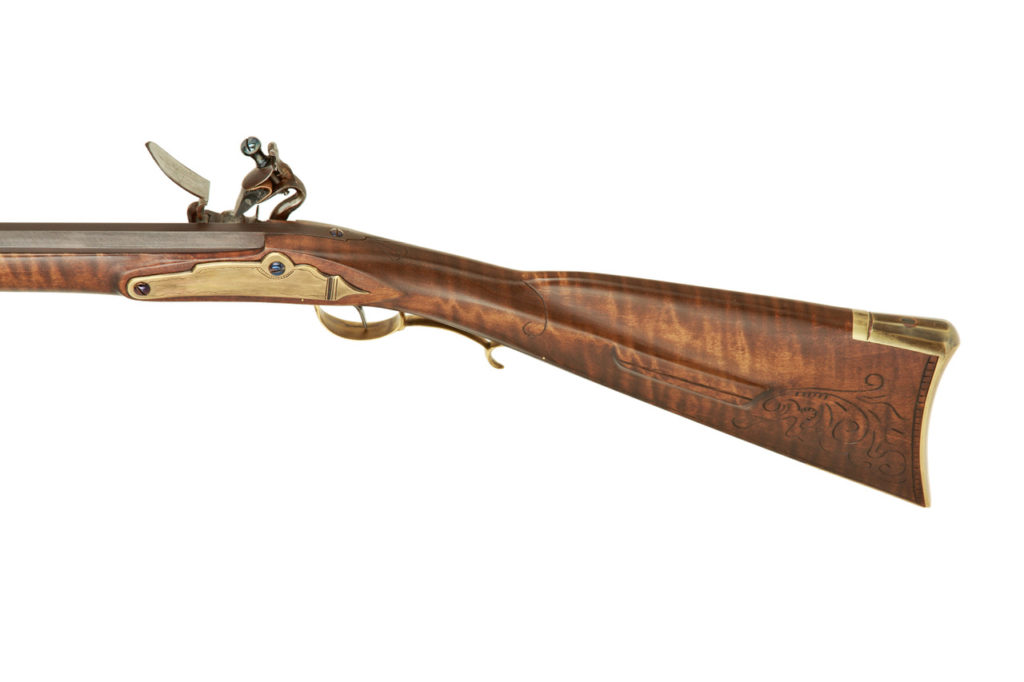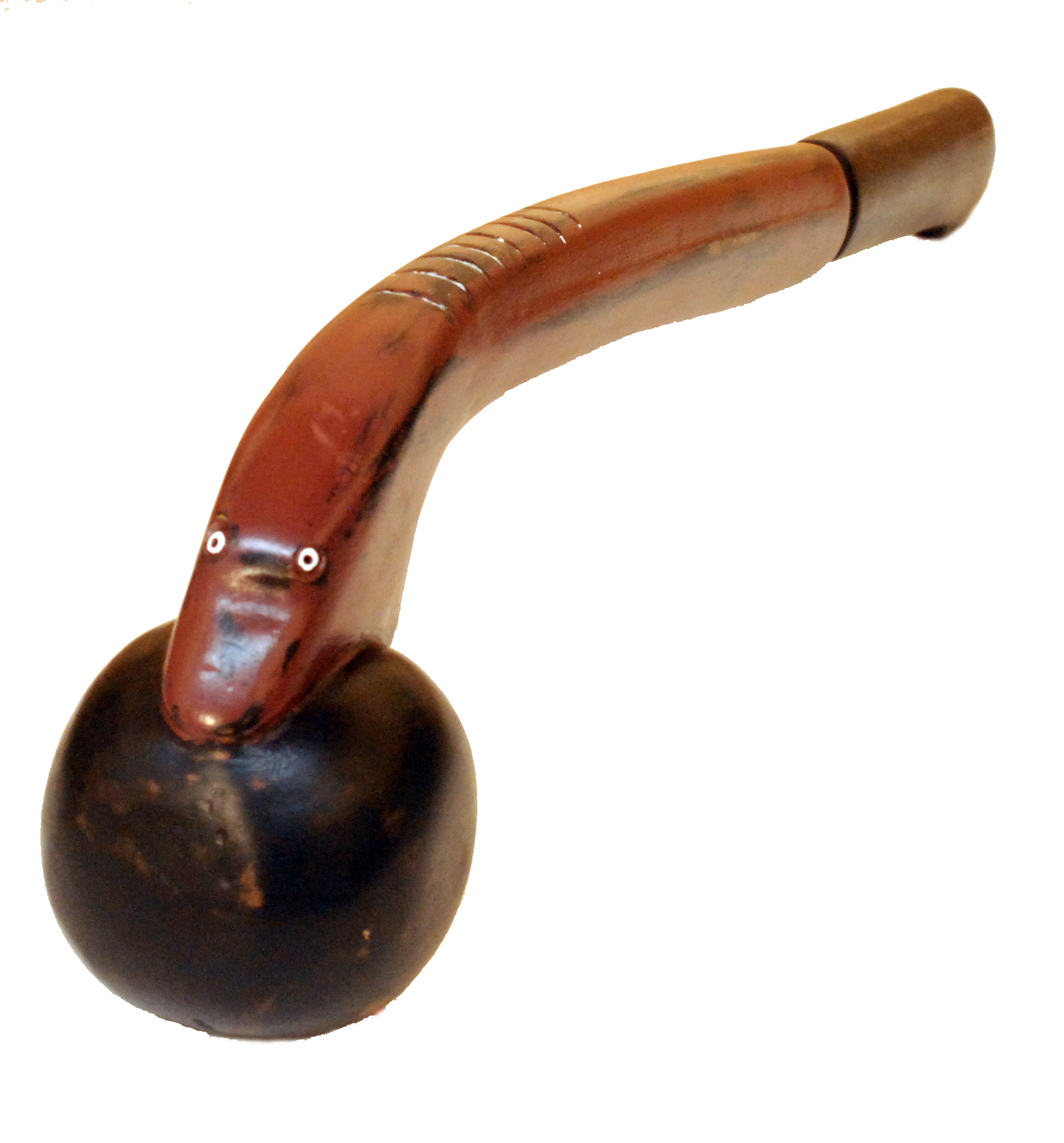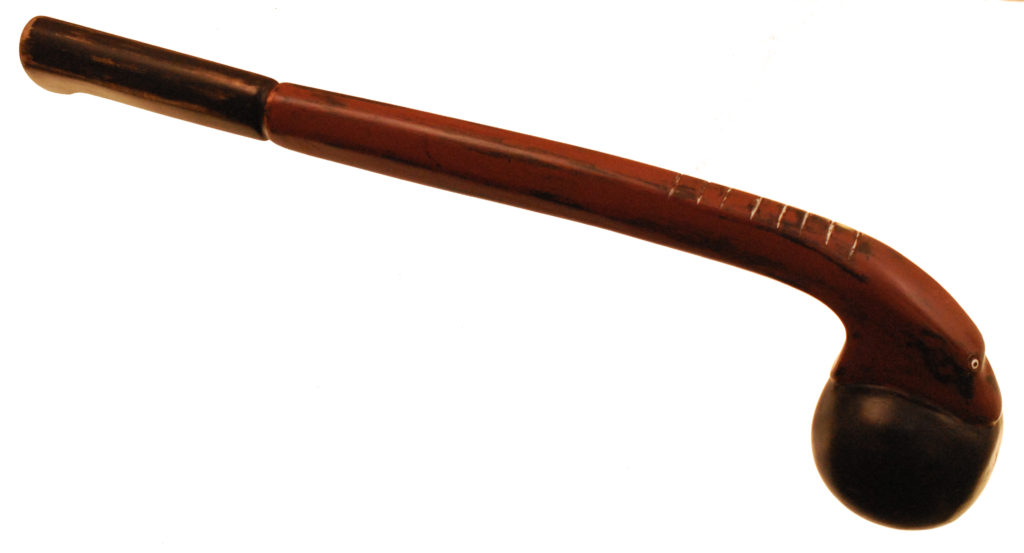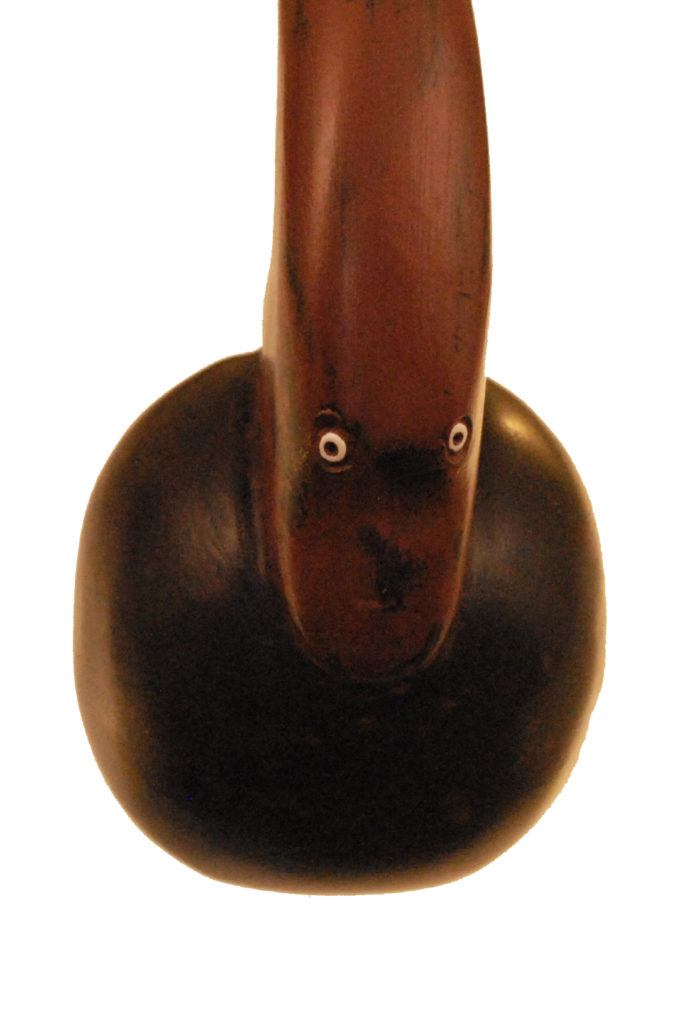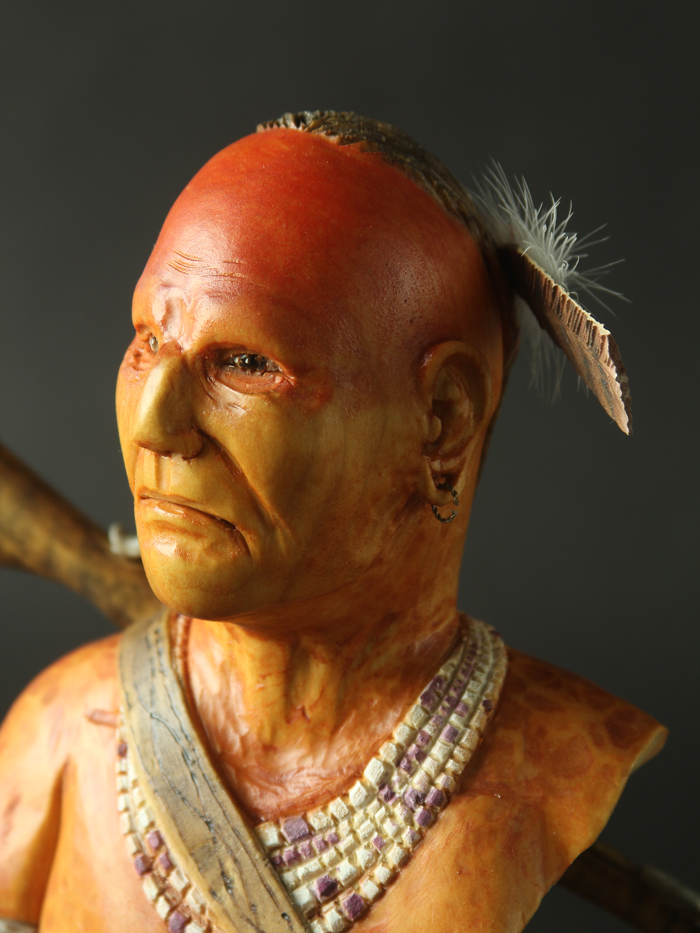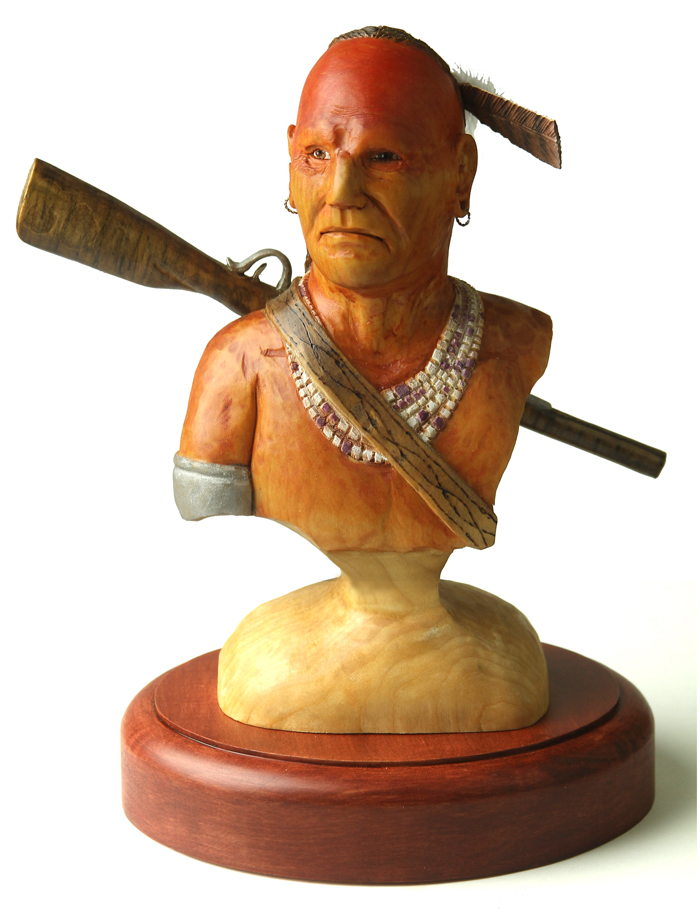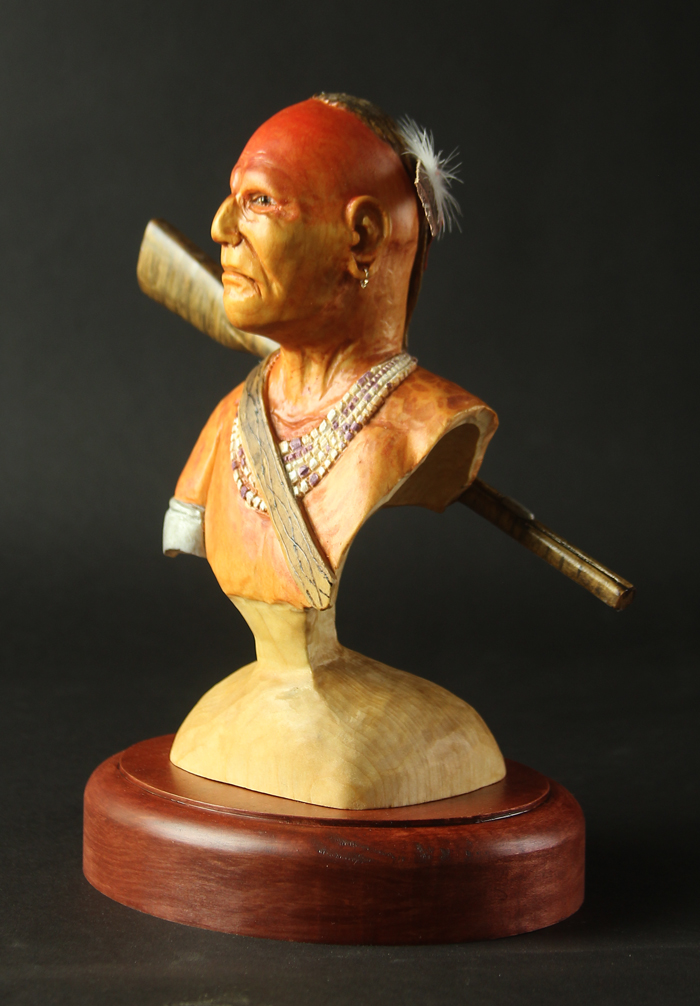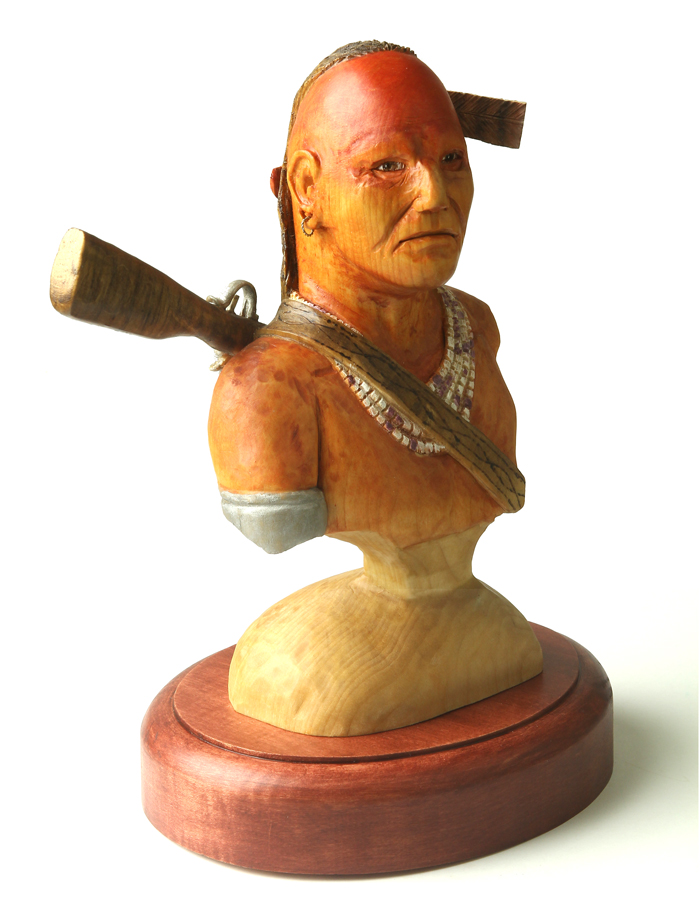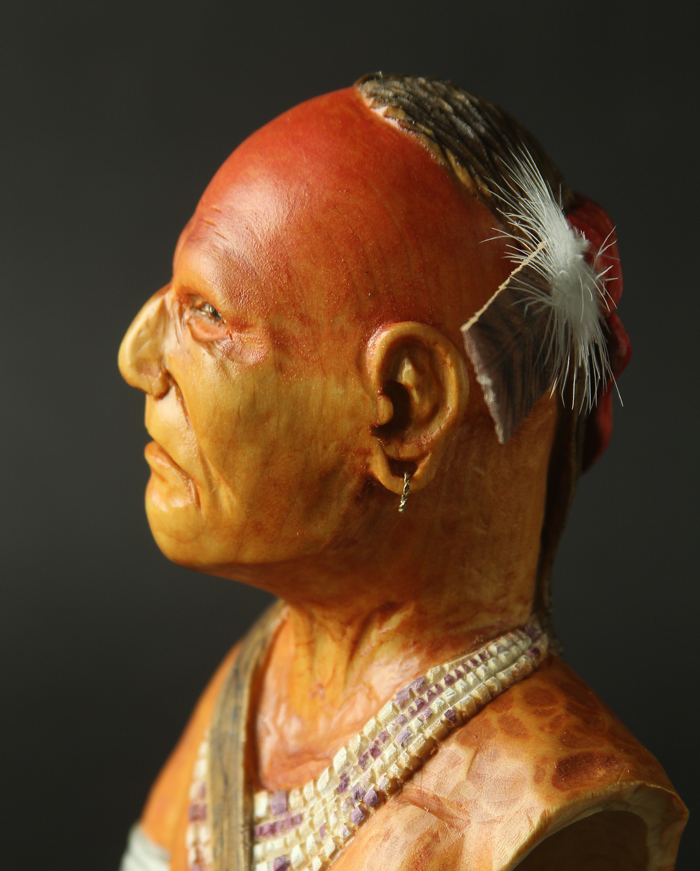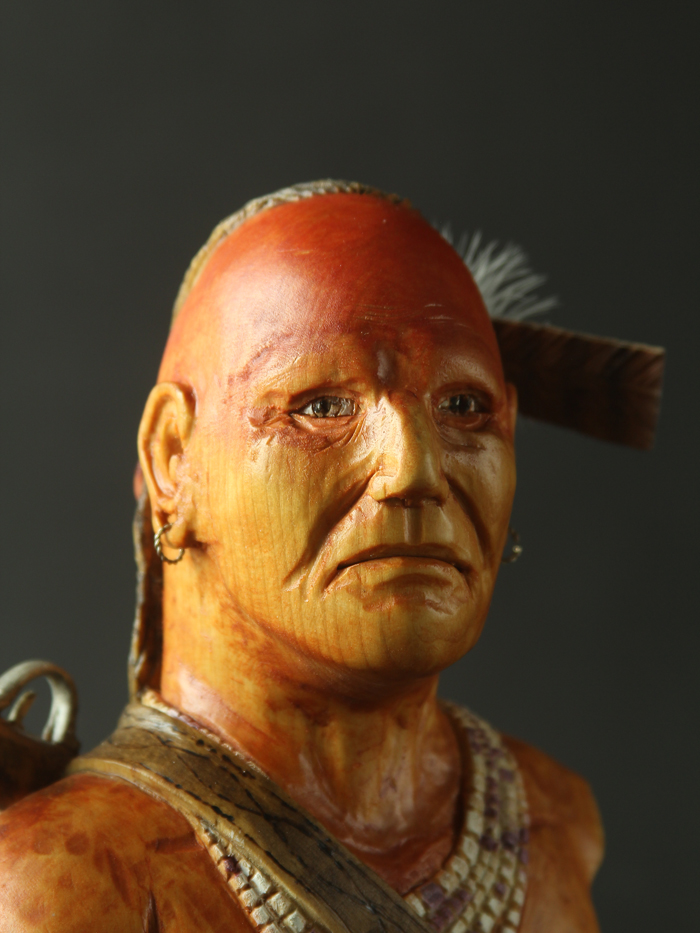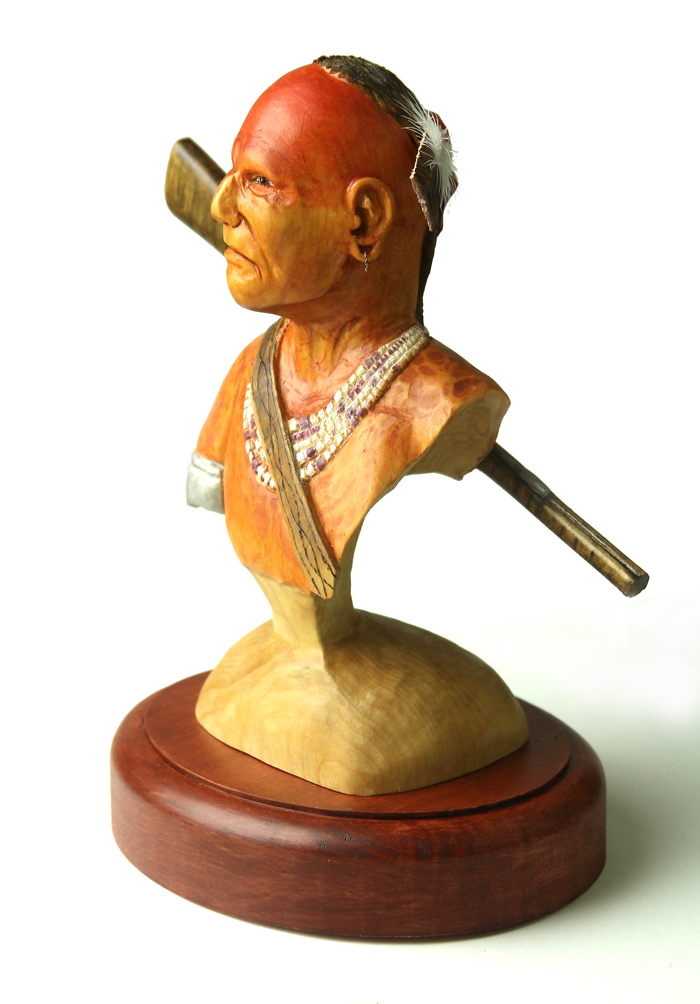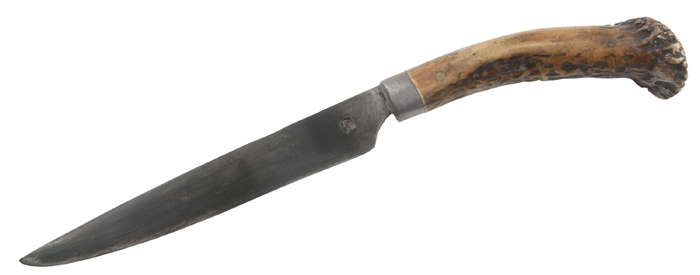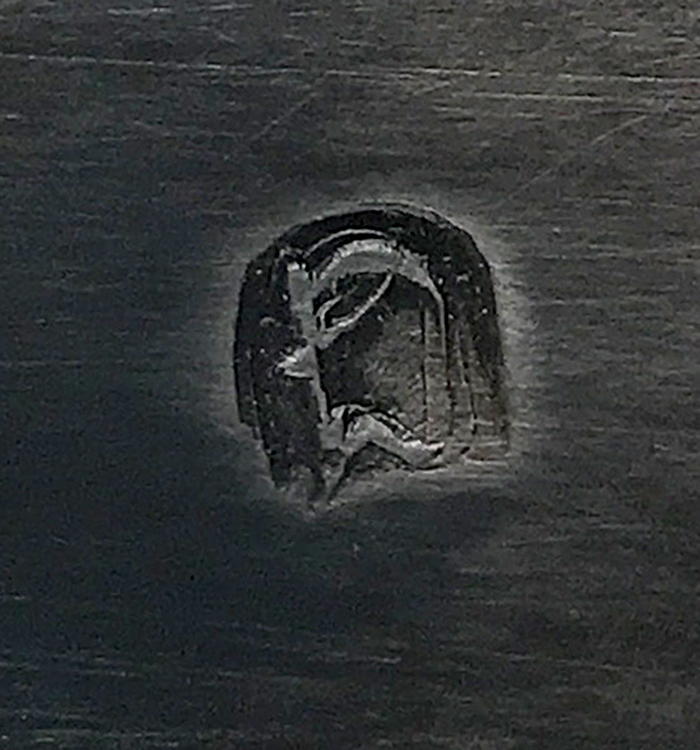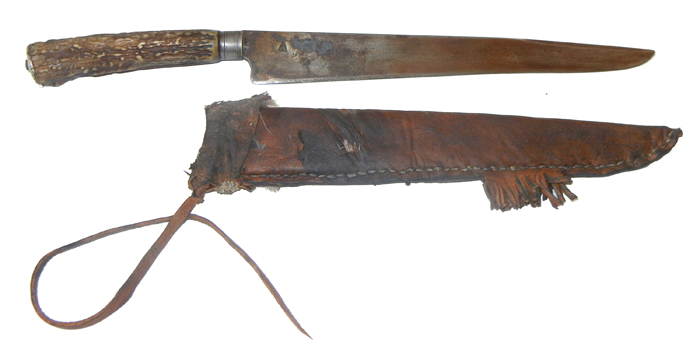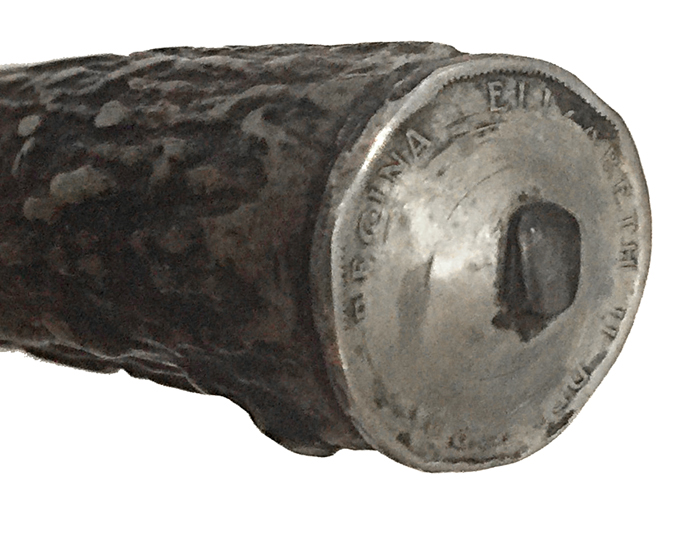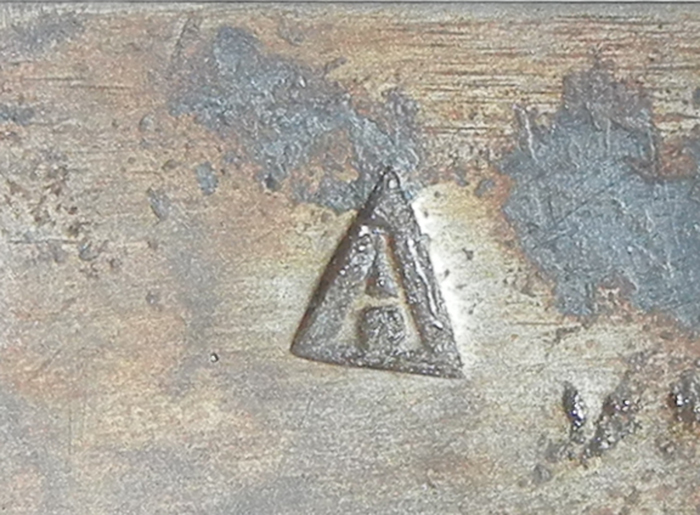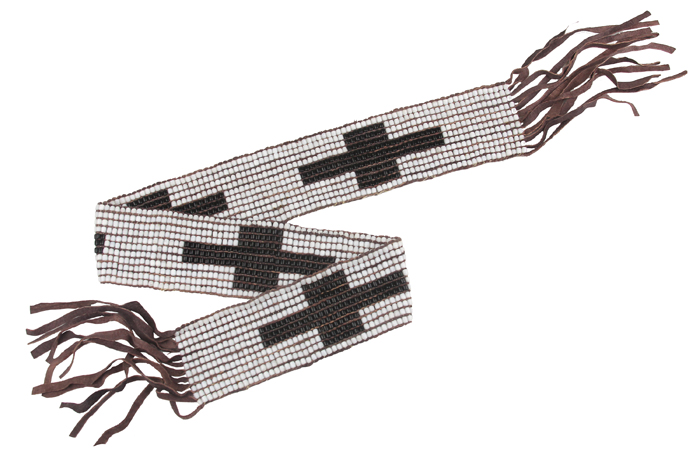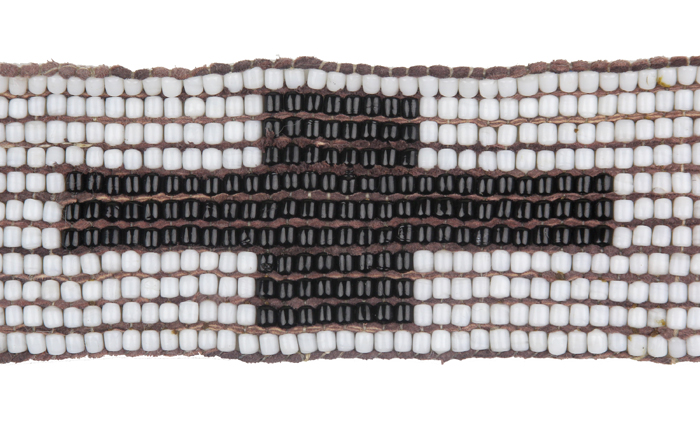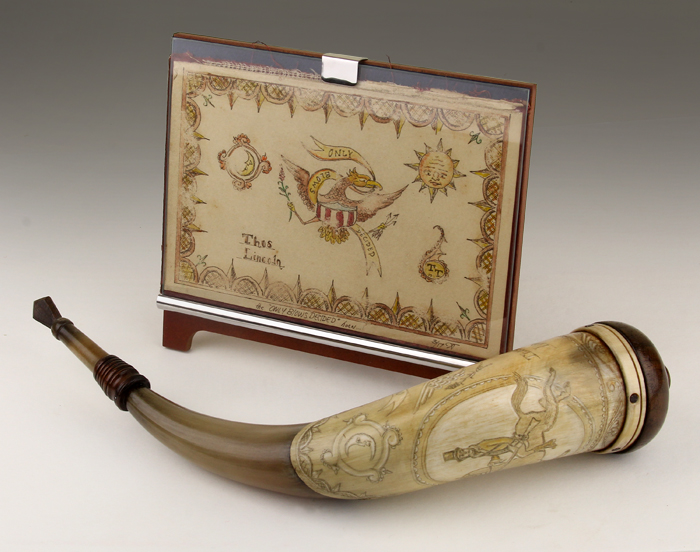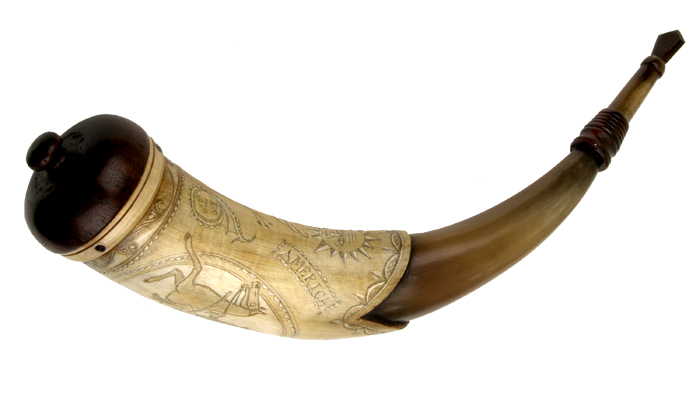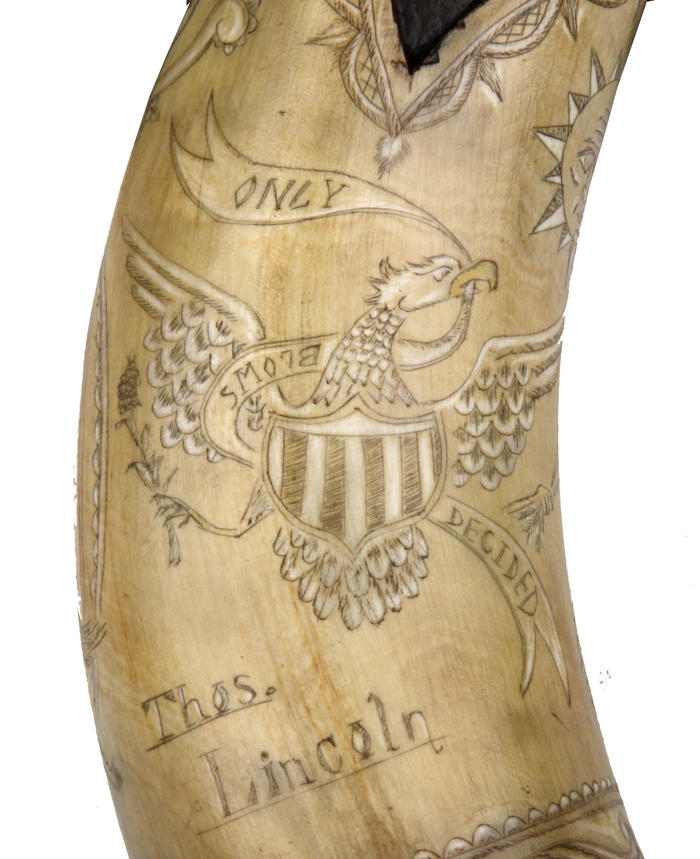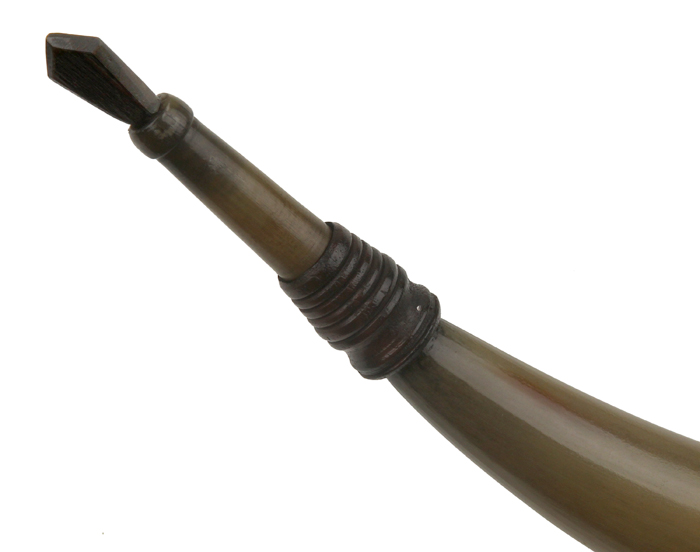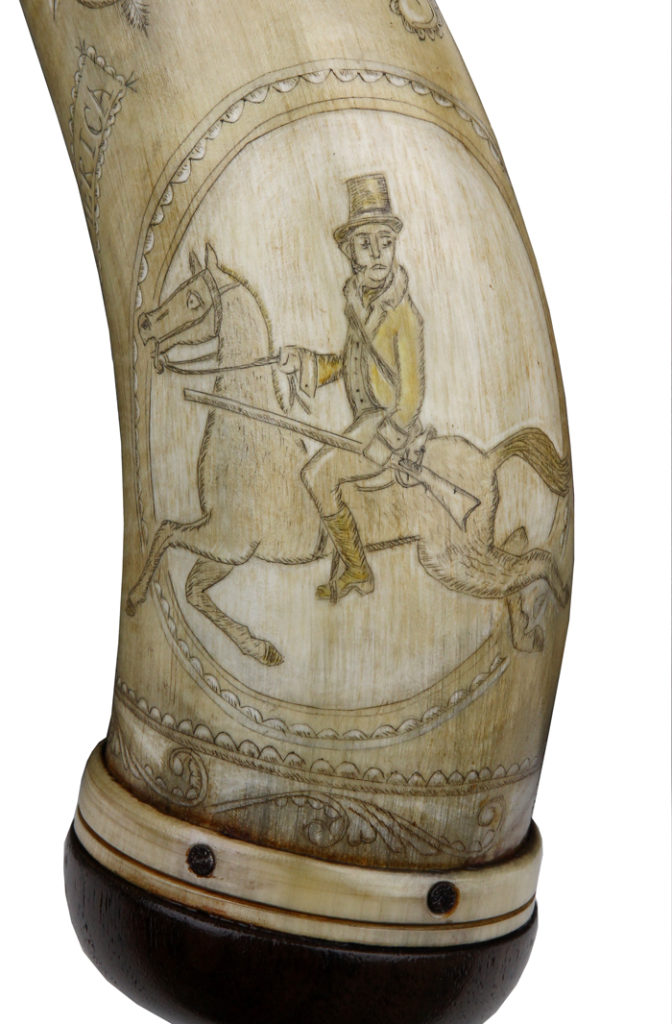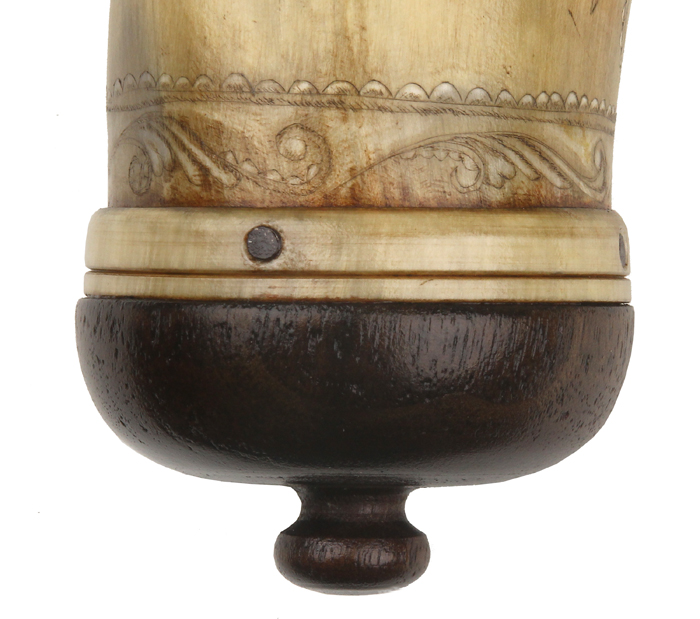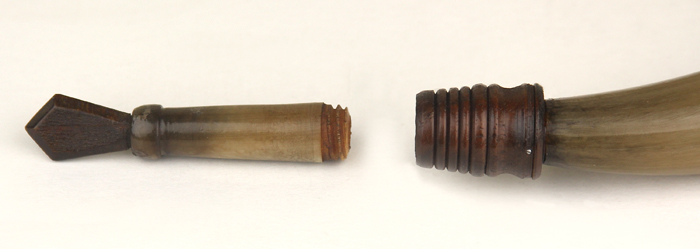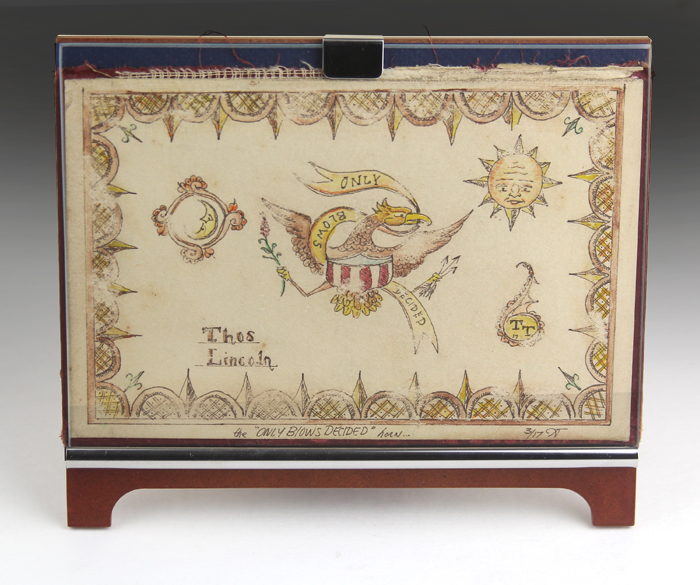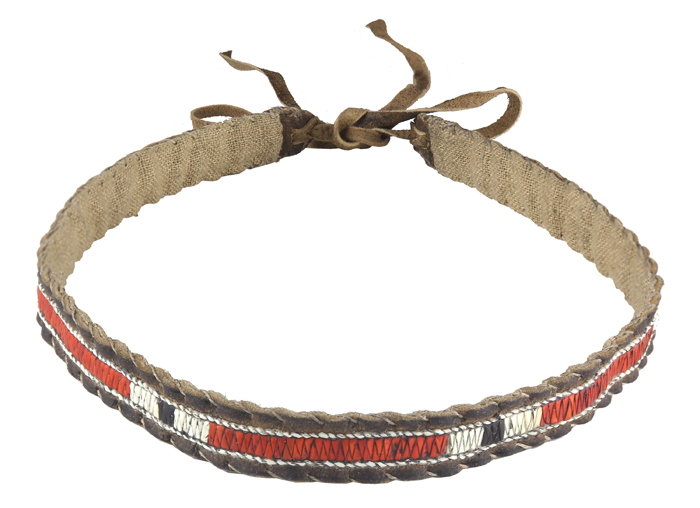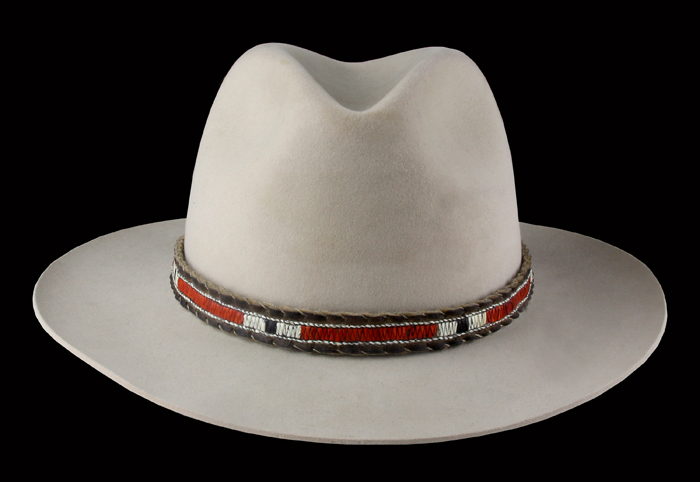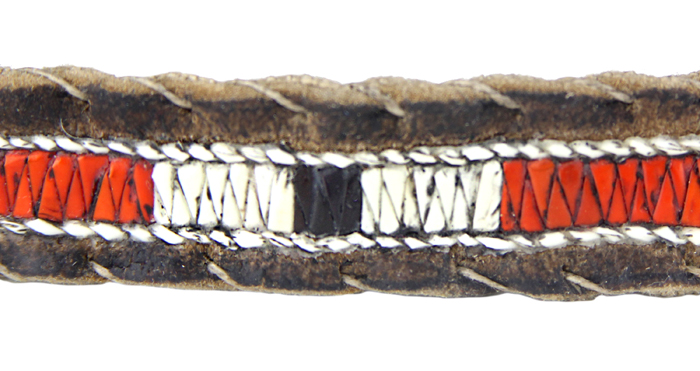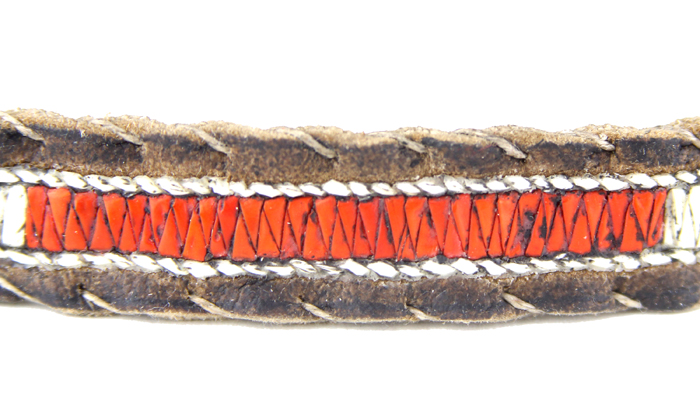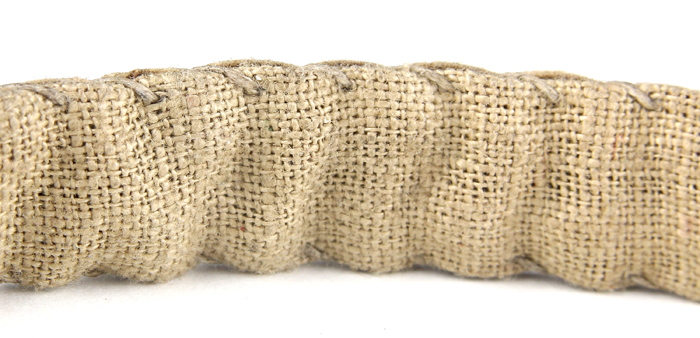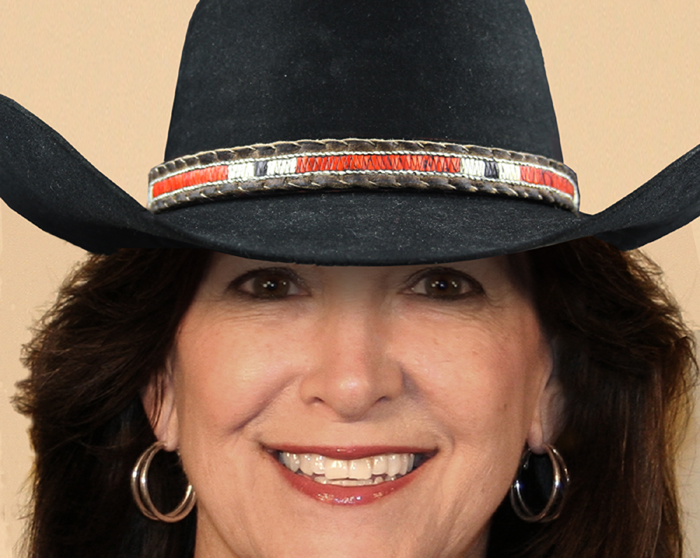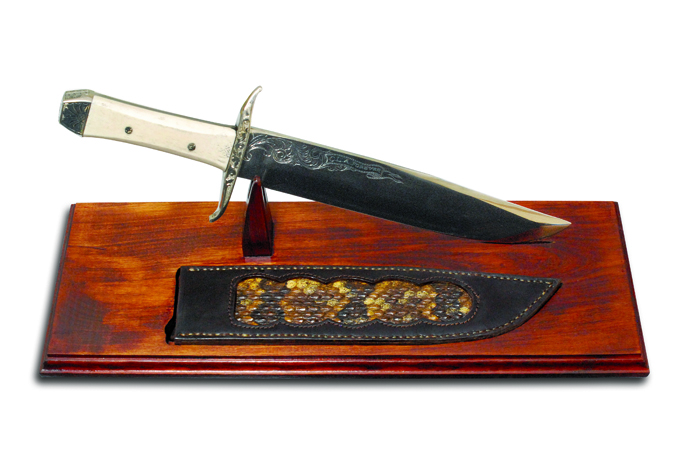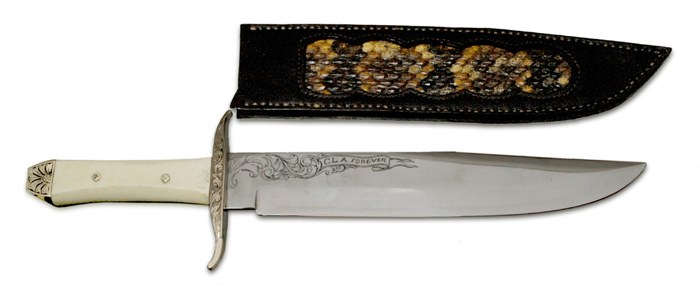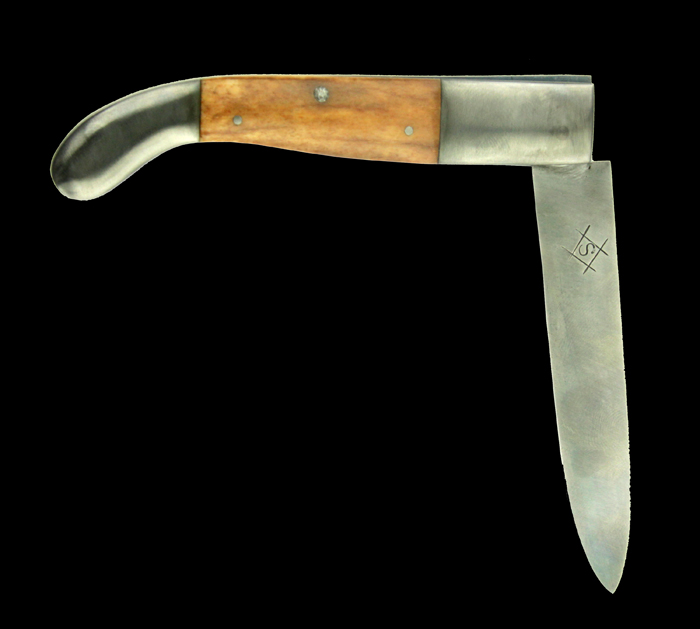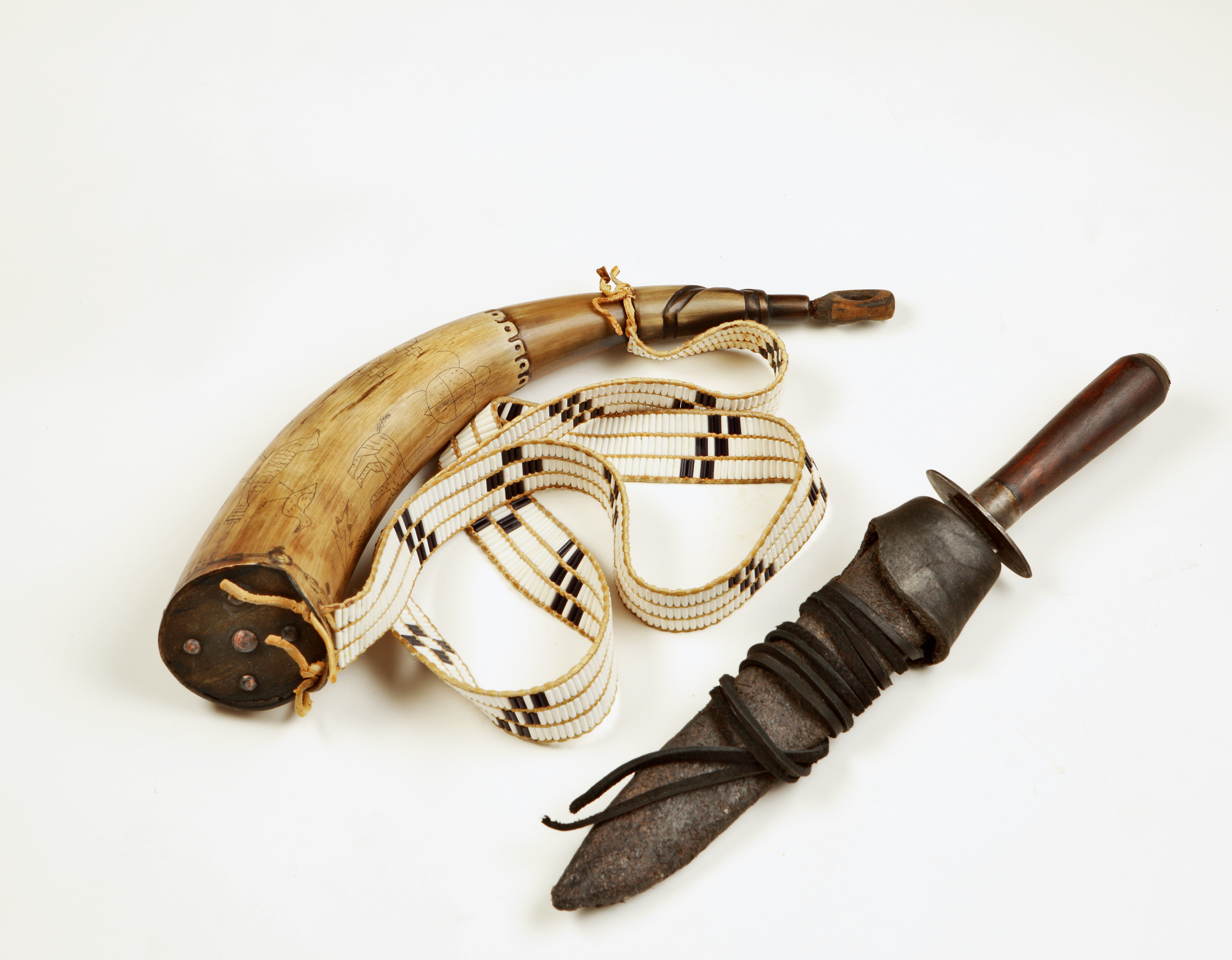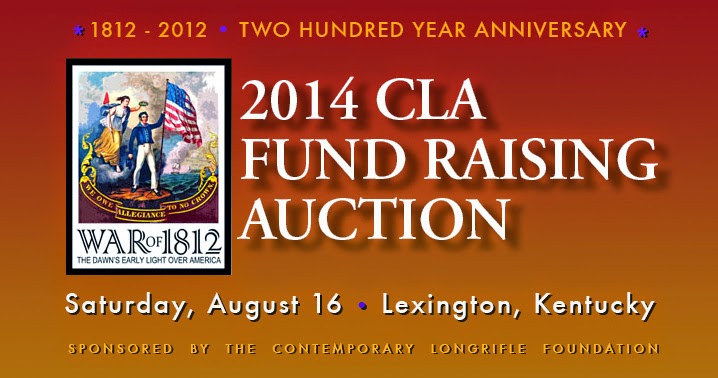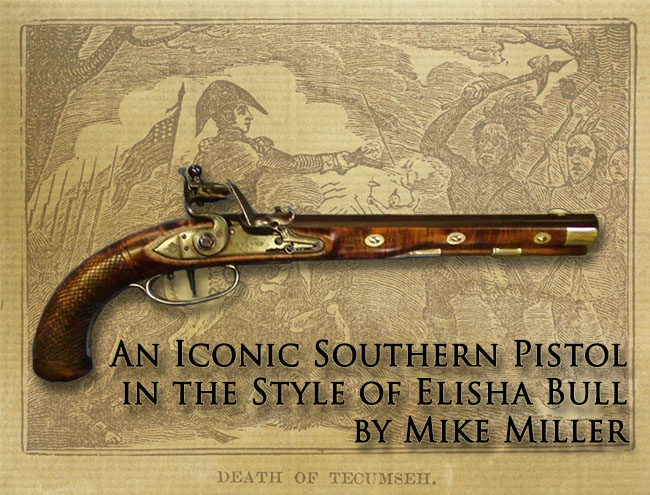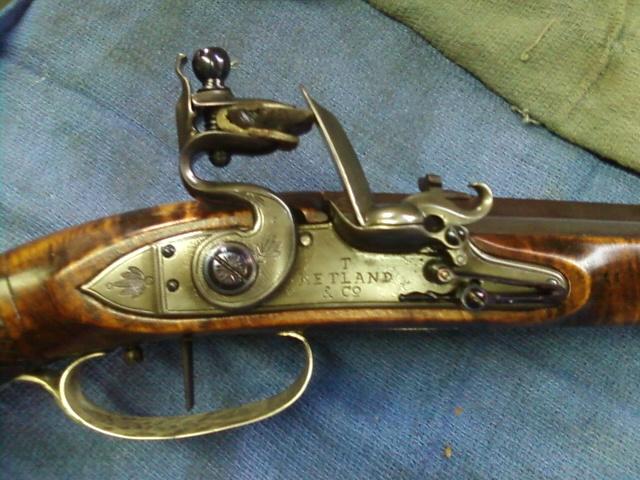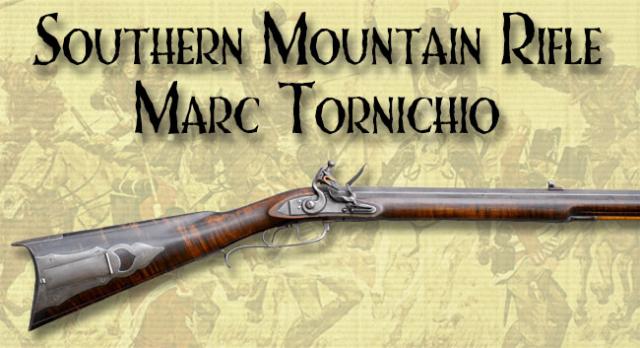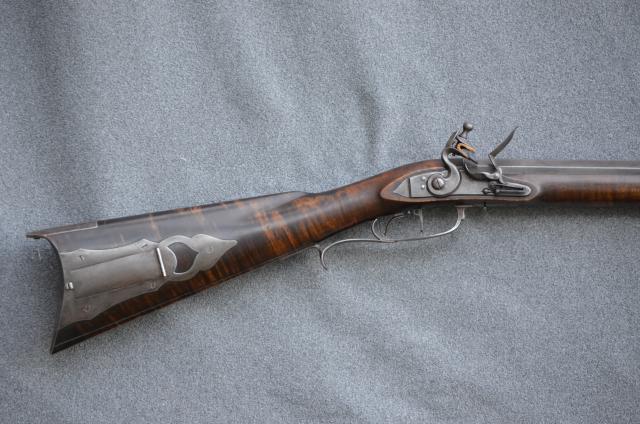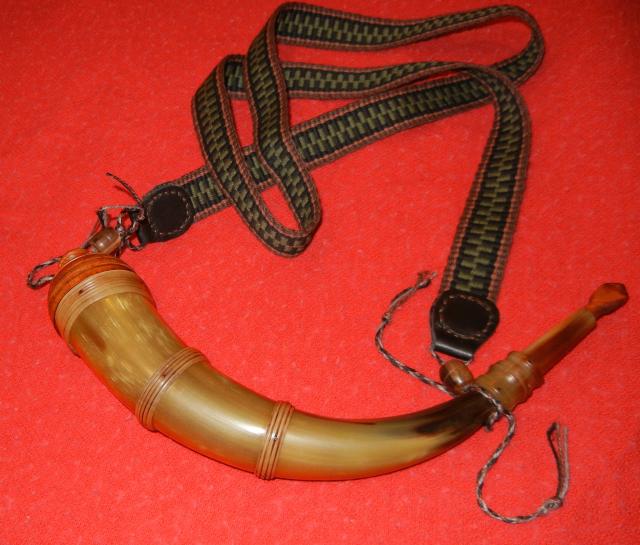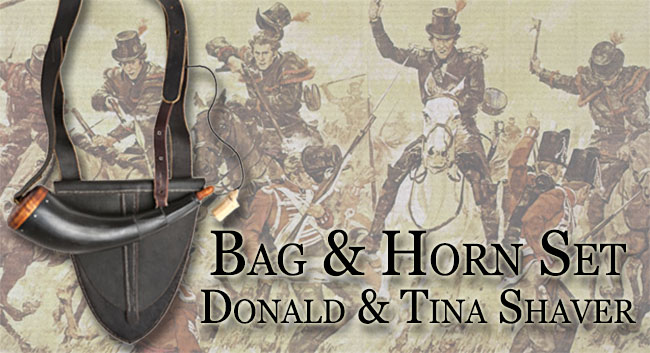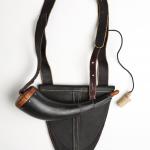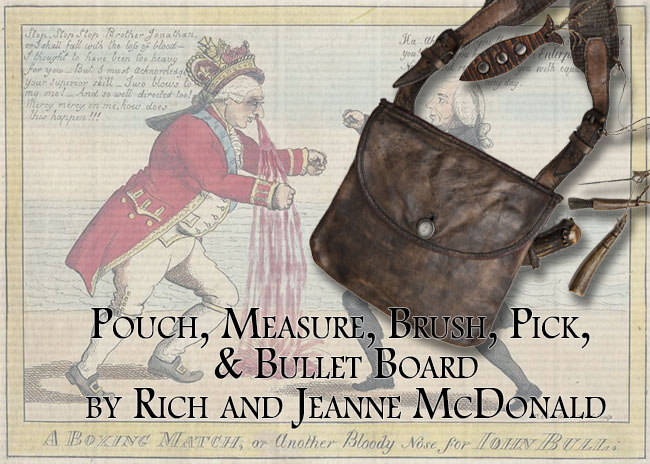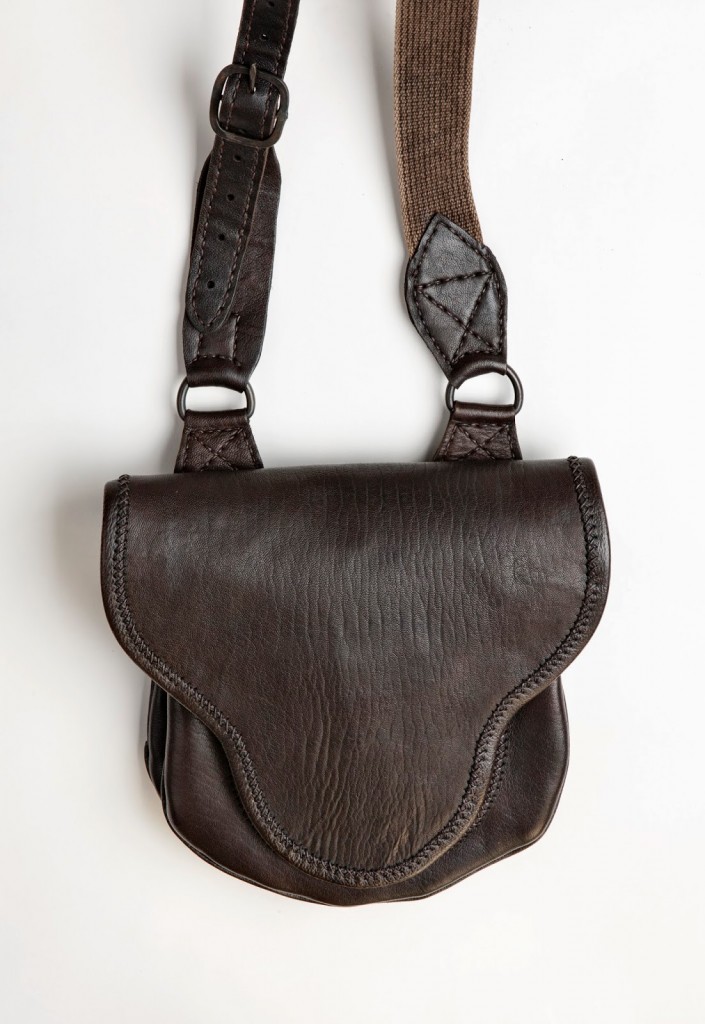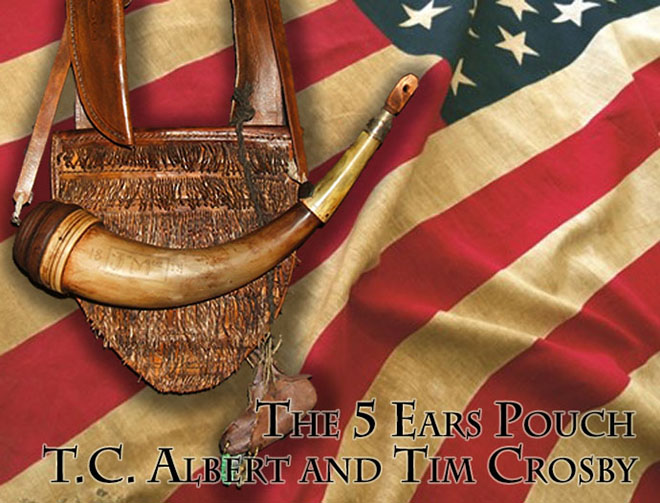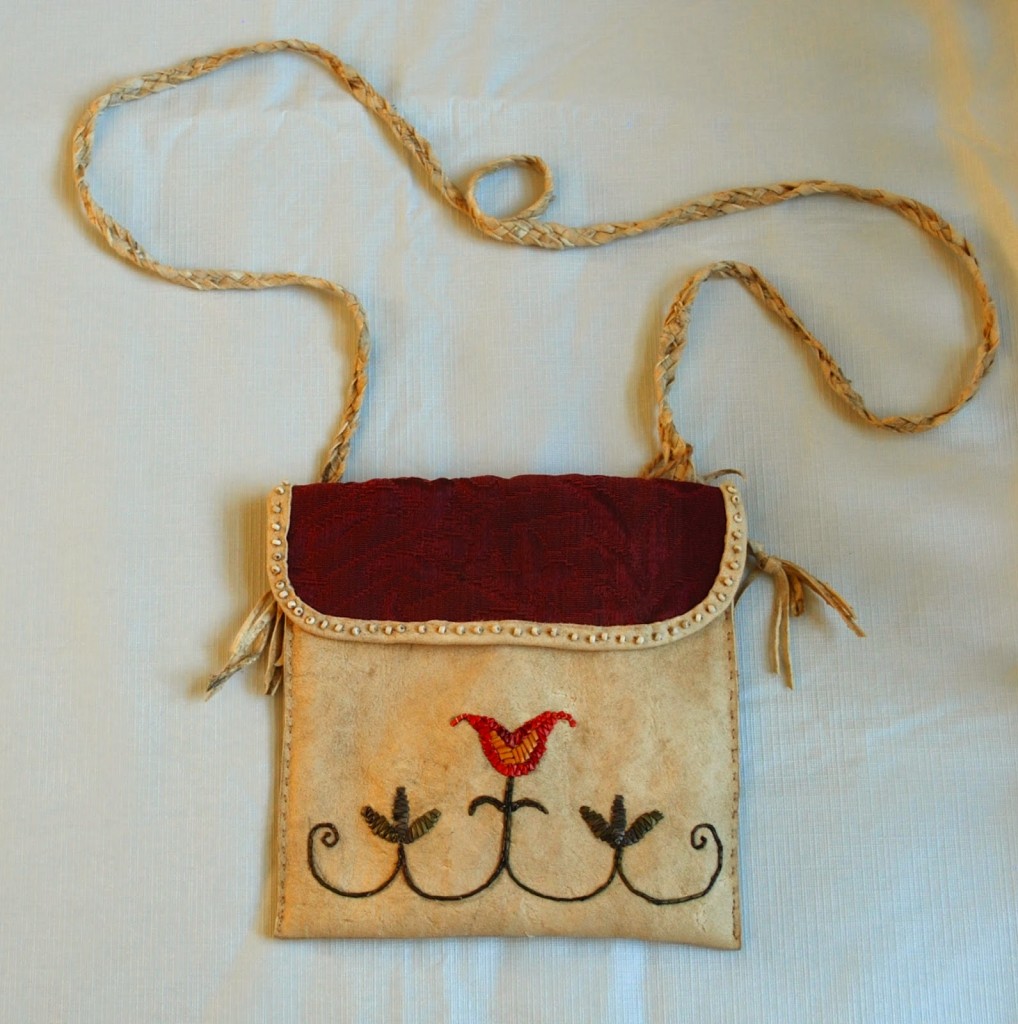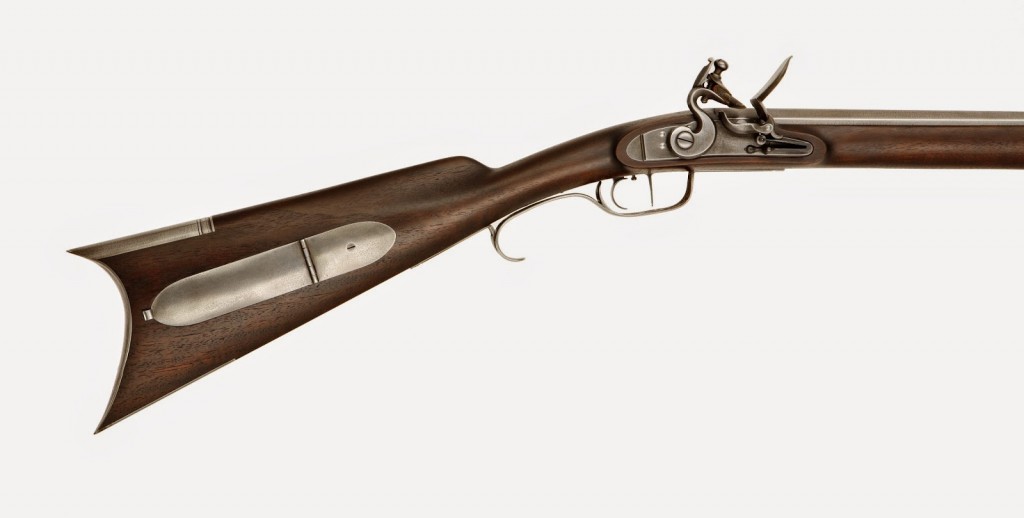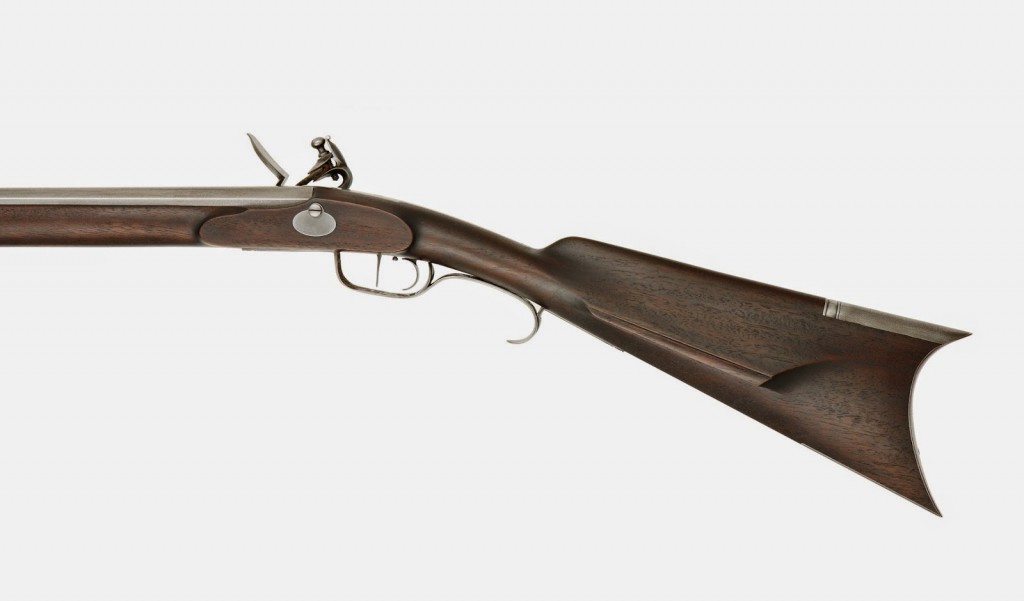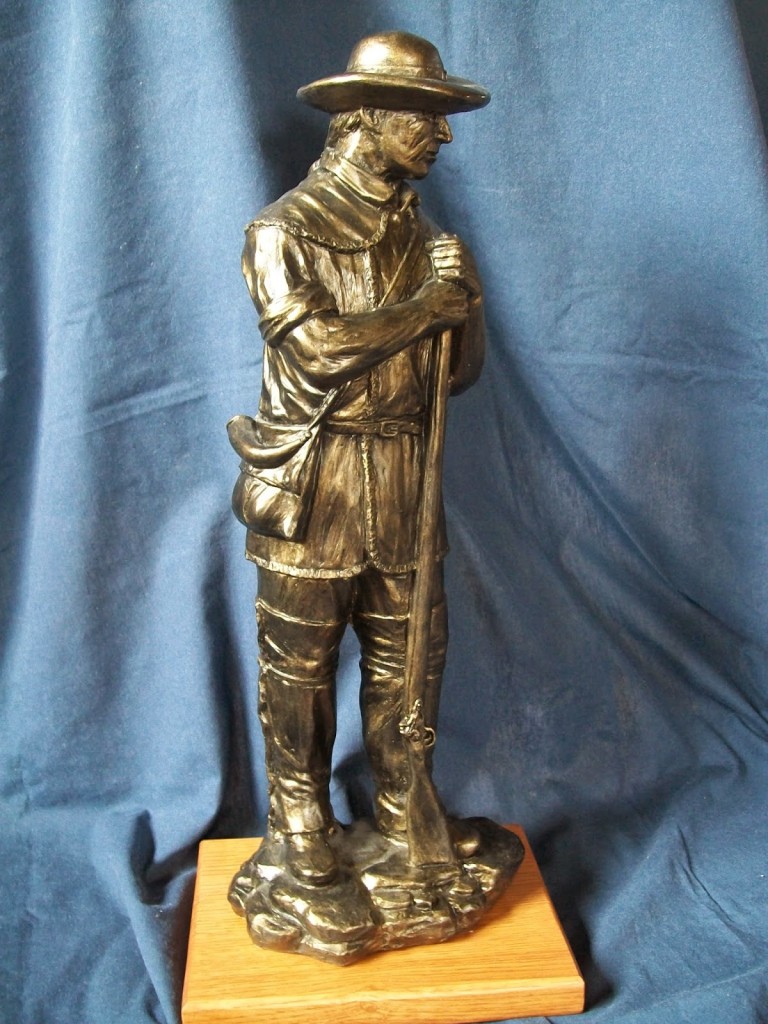CLA Auction Item
THE JOHN FRASER PROJECT by:
Gary Tucker, Eddie Rector, Ron Vail, Ken Scott , Heather McClure and J Casey McClure
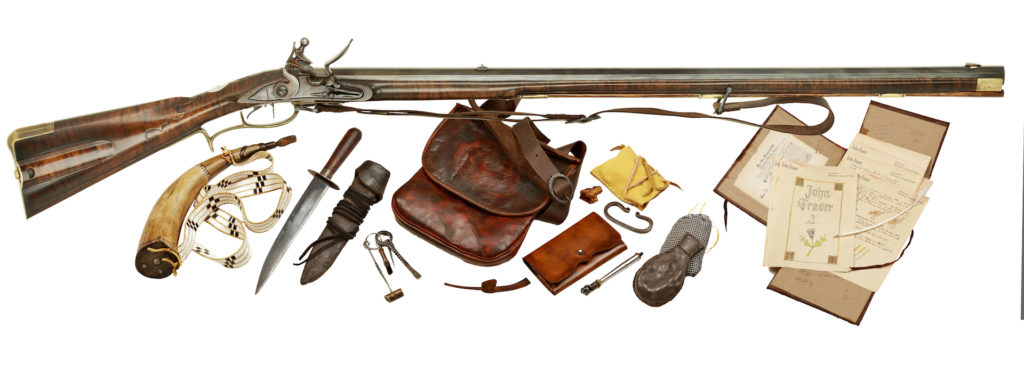
For the upcoming Contemporary Longrifle Foundation Fund Raising Auction to be held at the Annual Meeting in August, CLA members Gary Tucker, Eddie Rector, Ron Vail, Ken Scott , Heather and J Casey McClure have recreated a collection of artifacts based on early frontiersman and trader John Fraser’s life during the time of the French and Indian War.
The John Fraser Project tells a story about an important figure on the early frontier. He led an exciting life in extraordinary times. Fraser became a competent gunsmith and blacksmith as well as a frontiersman, a licensed trader, a scout, a guide and a militia officer. He was an important figure on the early frontier before and after the French and Indian War.
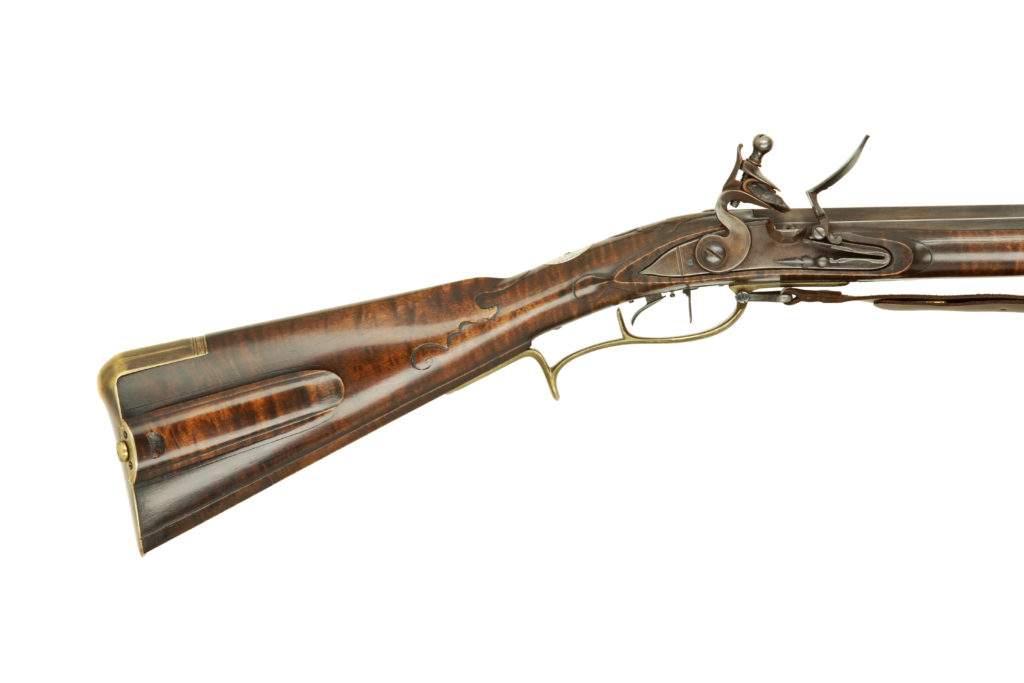
Fraser’s early life is a little hazy. Fraser seems to have been born in Scotland in 1721. Recent research finds a John Fraser orphaned after his arrival in the colonies and apprenticed to the Lehigh Valley gunsmith, Jacob Dubbs. Serving an apprenticeship to Dubbs would account for his skills in blacksmithing, gunsmithing and his love of music. Some earlier references put John Fraser in Dauphin County on a 122 acre farm from 1735 to 1740 but this is probably a different John Fraser. In 1735 Fraser would have only been 14. John Fraser the trader was an accomplished gunsmith and blacksmith at 19 years of age by 1740 when he established himself at Venango.
Venango was located where French Creek meets the Allegheny River. At that time it was the far western edge of Northumberland County Pennsylvania. Today it is the small town of Franklin, Pennsylvania. Fraser became a popular trader with the Iroquois tribes and their allies. He traded goods and gunsmithing for furs and obtained a traders license around 1748. He was an industrious young man who constantly strove to improve himself.
Trouble started for Fraser in 1750. In May, two of his employees, Maurice Turner and Ralph Kilgore were captured by “French Indians” at the Twightwee Town near Piqua in present day Ohio, and taken to Detroit. They later escaped, and made their way to William Johnson, the British agent for the Iroquois. They told Johnson that the French had raised 500 men to attack the Indians who were still friendly to the English.
Fraser continued trading from Venango during the year 1750. This same year in November, on the east side of Lake Erie, he was chased by the French and was forced to abandon trade goods belonging to Fraser and James Young valued at 217 pounds. Almost three years later on May 25, 1753, Fraser wrote to William Trent and other traders at Logstown warning them that the French forces were on the Allegheny and planning to eradicate the English trade. The French were supported by the Delaware Indians but were opposed by the Iroquois and their allies.
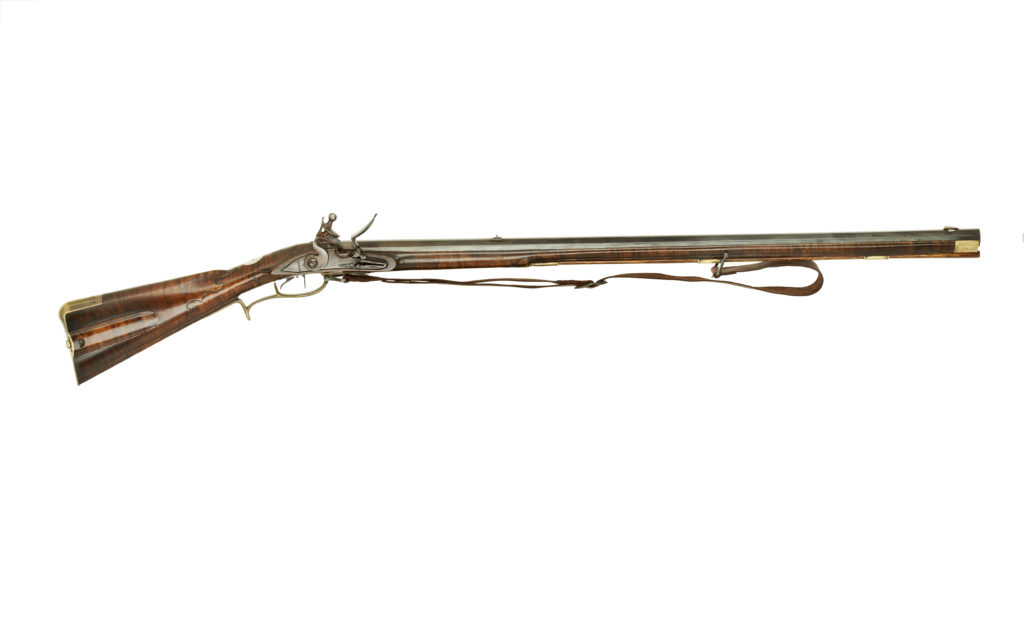
Later in 1753 a third Fraser employee, “William” narrowly escaped being captured by French Captain Philippe-Thomas de Joncaire, and William warned Fraser that Joncaire was coming to Venango. Fraser then abandoned Venango and fled along with a number of Iroquois and Mingos including the Seneca, Half-King. Harassed by the French, Fraser moved his base of operations almost 70 miles south to the mouth of Turtle Creek on the Monongahela River in the fall of 1753. The Turtle Creek post was a few miles east of the Forks of the Ohio.
Fraser continued trading and smithing from Turtle Creek. In addition to trade, he was involved with George Croghan, Andrew Montour and William Trent in efforts to resist the French. George Washington and Christopher Gist stayed at Fraser’s Turtle Creek cabin when Washington went out to accost the French over their incursions into the Ohio country. Fraser wrote to his partner in the east, James Young, that trade was poor since the French would not allow the northern Indians to hunt. Young in ‘Harris Ferry” was the eastern end of their trading operation.
The Ohio Company undertook to establish a fort at the Forks of the Ohio with William Trent as the Captain. John Fraser reluctantly agreed to be a part time “Lieutenant” for this operation. He showed a total lack of enthusiasm for the job preferring to try to save his trading operation. A French force came down from Canada under Colonel Claude-Pierre Pécaudy de Contrecour to capture the half-built fort and on April 18th, 1754, Ensign Ward surrendered the Fort. With the French in command of the Forks of the Ohio, all the English Traders, including Fraser, drew back into Pennsylvania and Maryland. Despite the danger from the French, Fraser and Young, kept trading.
George Washington wrote he was encamped at Great Meadows on June 1, 1754 when a trader came by, probably John Fraser. Washington pressed Fraser’s animals into service and detained him until the Battle of Fort Necessity. As a result Fraser lost a fortune in goods, including seven “rifled guns”, five smooth guns, and two cases of neat pistols. Along with these were five casks of gun powder, two dozen bridled gun locks and a complete set of armorer’s tools.
Under the terms of the surrender at Fort Necessity Fraser would have been allowed to keep his personal weapons. The French and Indians however looted the baggage train and all of his other goods were lost.
After the defeat at Fort Necessity, Fraser pulled back his operations to Virginia. Governor Dinwiddie of Virginia, a leading member of the Ohio Company, ordered a court martial of Fraser and William Trent over the April 1754 loss of the fort at Forks of the Ohio. George Washington came to Fraser’s defense and the court martial never took place. On the contrary, in August 1754 Fraser was made Adjutant of the Virginia colonial forces. Dinwiddie and Fraser remained at odds. Fraser resigned his command by the end of 1754.
While in Virginia Fraser married his wife Jane and then moved to Evitts Creek, near Fort Cumberland, Maryland when he resigned. But his adventures did not stop there. He was employed as a guide for Braddock’s ill fated expedition to Fort Duquesne. He guided the force along the rugged ground on the north side of the Monongahela river to near his old trading house at Turtle Creek. In the battle on July 9, 1755 he again lost his baggage in the retreat.
In October 1755, Washington asked Fraser to repair the muskets at Fort Cumberland. Fraser began building a new gunsmith’s shop at Evitts’ Creek. On October 9, raiding Indians captured Jane Fraser while she was on her way to Fort Cumberland. Finding his hired man, who was escorting her, killed and scalped, Fraser assumed his wife was dead. Jane was gone for over a year when she escaped from the Indians and returned home to find her husband re-married and the gunsmith’s shop still not completed. The second marriage was undone and John and Jane Fraser set about building a home and a farm where they resided to 1758.
Fraser’s last campaign was with General Forbes in 1758. He served as Captain of Forbes’ guides, as a translator, and as wagon master. He may have had input into the route of Forbes Road
When the Forbes campaign was over, the Frasers moved to Bedford, Maryland. His six children were born in Bedford County where he was a yeoman farmer, an innkeeper, a land speculator and a Justice of the Peace until his death in early 1773.
Fraser was a well liked man on the frontier. He was friends with George Washington. George Croghan, Andrew Montour and Christopher Gist. The Iroquois and Mingos cosidered him honest and a friend. Fraser was a great traveler. He made regular trips to the Miami River country. He went back and forth to Harris Ferry, now Harrisburg, to pick up goods and meet with his partner. When he moved to Bedford he traveled with General Braddock, back to the forks of the Ohio. Later he made that same trip again
with General Forbes.
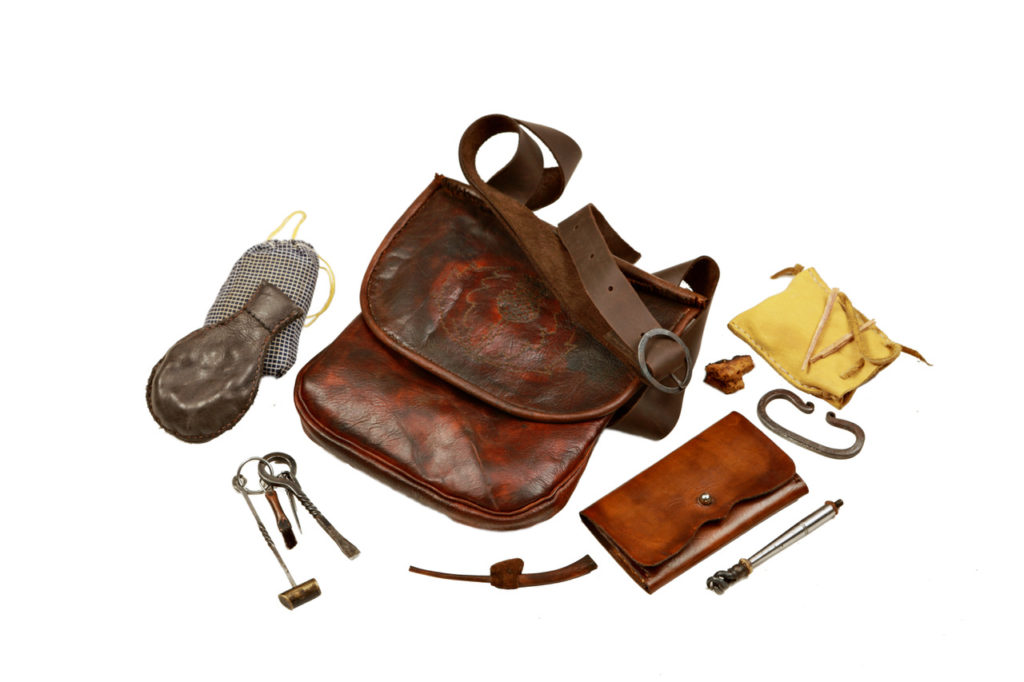
THE JOHN FRASER PROJECT
The Contemporary Longrifle Foundation is proud to present at auction the John Fraser Project. Gary Tucker, Eddie Rector, Ron Vail, Ken Scott , Heather and J Casey McClure are telling John Fraser’s story in recreations of the material goods he may have have had with him on his long journey from the Lehigh Valley, through Venango, Turtle Creek, Fort Necessity, and Fort Cumberland
John Fraser probably brought a rifle with him when he came to Venango, a product of his own work, built possibly under Jacob Dubbs’ guidance. Gary Tucker has created an interpretation of the rifle Fraser may have carried. Gary took cues for the rifle’s style from research by Wayne Watson and Lee Teter indicating a John Fraser was apprenticed to Jacob Dubbs when Fraser’s parents died. With no signed example of a Dubbs or Fraser rifle known, Gary used his creativity and several rifles attributed to Dubbs to tell the story. He built the rifle around an early profile barrel donated by the Rice Barrel Company. Jason Schneider at Rice manufactured the 36 inch barrel in .60 caliber with a 1 1/8” breech, which he felt would be appropriate for the period. Tim Tressel at R. E. Davis donated the early style flint lock. Gary ran across a wonderful 18th century Scottish fowler at the CLA show and used the engraving patterns on the sideplate, buttplate, triggerguard, and thumbpiece as a basis for the engraving on the Project rifle. Gary also incorporated some early Berks county characteristics, a wrist that is wider than tall, and an open ended brass nosecap. The barrel is crowned in the early European fashion and it looks really good on this rifle. The stock is a piece of stump cut curly maple selected by Fred Miller as appropriate for an early rifle gun. The sliding wooden patchbox is nicely done. It has a great subtle figure and raised baroque carving sets off the stock. The stock architecture is definitely early with a 2 inch wide butt. The classic sliding lid wooden patch box completes this correct interpretation of an F & I Period rifle. The rifle is equipped with swivels and an Eddie Rector hand made sling to accommodate the rigors of travel.
Ron Vail created the Project powder horn telling a story of Fraser’s close relationships with the Seneca. A horn like this could have been a gift from the Seneca, perhaps even from Half-King himself. There is a thistle on the horn reflecting Fraser’s Highland heritage along with the totems of the eight Seneca clans and the Tree of Life of the Seneca. The black and white wampum strap by Eddie Rector reminds us of the brisk trade that Fraser did in wampum beads.
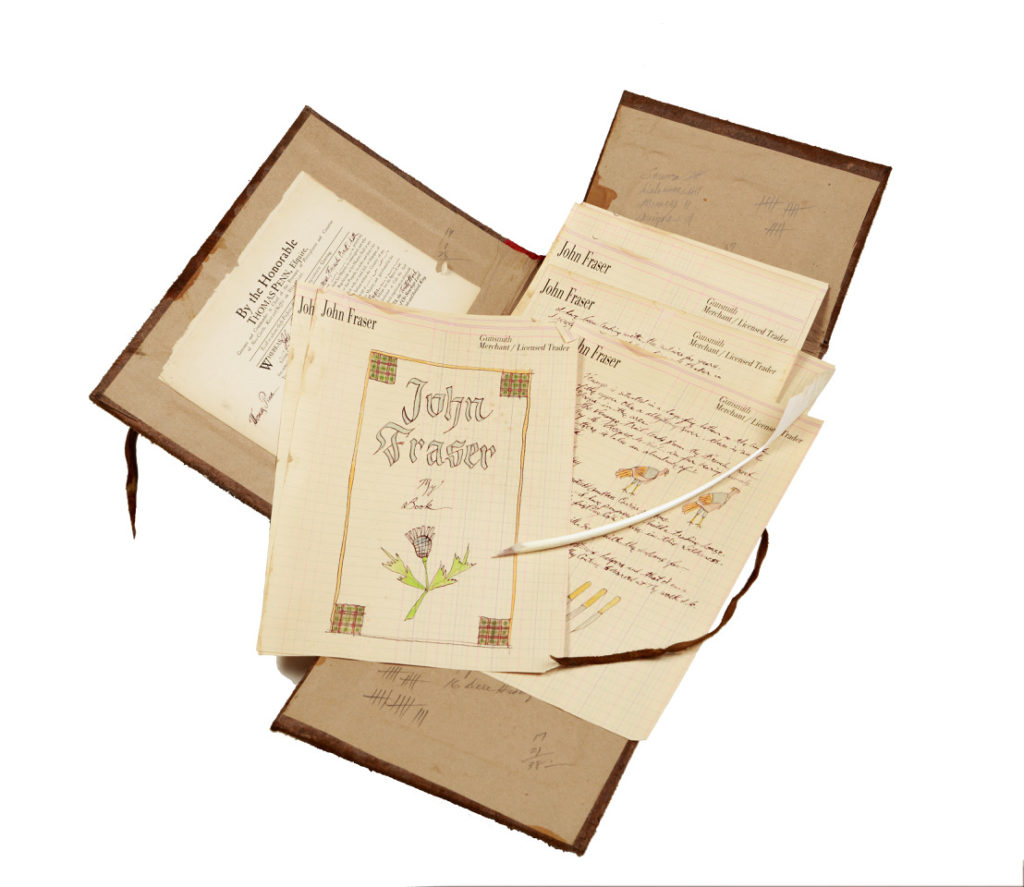
The knife by J Casey McClure is hand forged in a traditional Scottish utility knife style. It could appeal to a pragmatic trader like Fraser more than a dirk. The hand forged blade is over 8 1/4 inches long and has a nice distal taper and a finely ground edge. An iron cross guard and ferule set the handle off. Heather McClure made the handsome, practical, dark sheath that pairs perfectly with the knife.
Eddie Rector created a hunting bag with tools such as Fraser may have carried in his trekking. This fine bag has a stitched thistle decoration on the flap and piece of authentic Fraser tartan, hand woven in Scotland, lining the flap. A striker and punk in a tinder bag, a set of rifle tools and a tow worm in a wallet are in the bag. There is also a bullet bag and small sack of tow. This is a hunting bag well stocked and neatly arranged and cased for the wise traveler. Eddie made all of the accoutrements and constructed the bag from Scottish Bull leather. The bag is accompanied by a small hammer polled tomahawk by an unknown maker donated by Eddie with a shoulder strap sheath he made.
Much of what we know about Fraser comes from his own correspondence. Ken Scott created a Trader’s Journal representing what Fraser would likely have carried to keep his records and correspondence. It incorporates a Pennsylvania Trading License, some sketches and notes in an authentic hand crafted portfolio showcasing Ken’s remarkable skills. With sketches and notes this recreated Journal brings a personal touch to the project. This carefully crafted journal is a great work on its own. It is a wonderfully appropriate addition to the project
The JOHN FRASER PROJECT is a well researched, fitting tribute to this little known hero. The Contemporary Longrifle Association is proud to announce THE JOHN FRASER PROJECT will be auctioned in the 2017 CLA fund raising auction as a single offering. The auction will be held on Friday, August 18, 2017 in the Grand Ball Room at the Lexington Convention Center in Lexington Kentucky. More details will be available by going to the CLA website and clicking the CL Foundation button.
References
Clark 1956 Howard Glenn Clark John Fraser, Western Pennsylvania
Frontiersman Western Pennsylvania Historical Magazine Vol 38 pp 83 to 93; vol 39 spring pp 35 to 41, Vol 39 summer pp 109 to124
Minutes of the Provincial Council of Pennsylvania vol. 5 Published by the State of Pennsylvania 1851 pp 660 to 665
Ohio Company Papers The Ohio company papers, 1753-1817, primarily papers of the “Suffering traders” of Pennsylvania, by Kenneth Bailey pp 83 to 85 and 123 to 128
text by Heinz Ahlers
photos by Ric Lambert
